Bangkok Airport
Our introduction to Thailand was atrocious…the first impressions were that of money-hungry, gouging prices. We went in with our eyes open and were expecting it to be more expensive than the places we had recently been…but this took things to another level. To use an ATM here…any ATM…you must pay between 150 and 180 baht to withdraw funds. 2023 update the opinion was correct and the ATM fee has gone up to 220 baht. This is between $6-8 to get your own money out…further to this they limit withdrawal sizes…so that you must pay this fee over and over.
We arrived at Bangkok airport (not the main one) at lunchtime and had a 3-hour layover until we could fly on to Phuket. We cruised the food options to be shocked at the prices…a subway sub was over $13 (once converted), a McDonald’s meal was well over $10 as was Burger King, a latte was $9. Now I accept that airport prices almost everywhere are high…but these prices are almost double the Australian prices…and as we all know Australia is expensive. We settled on 2 Burger King whoppers and we shared a large fries and a coke for $26 Australian.
Phuket
We thought that after 14 months away a 2-week break by the beach in Thailand was the perfect way to wind down before returning back to Australia. The beach time may have been awesome…but Thailand…at least Phuket…was not it. This place is the pits. Having been through the last few countries…any one of these would have been a much better choice than coming here to Phuket.
Thailand is the home of the girlie-boy…officially titled the Kathoey…they are much more visible and more accepted in Thailand than the transgender or transsexual communities in Western countries. As Thais generally believe in Karma they tend to believe that being a kathoey is the result of transgressions in past lives, therefore kathoey deserve pity rather than blame. They are everywhere…you can see them working in shops, movie theatres and clothing stores…but mostly you see them working at massage joints. And mostly they are grabbing tourists offering massages with happy endings.
We settled into an ok hotel in the middle of the tourist area near Patong beach. This is the most famous beach resort in Phuket and is tourism hell. Thousands of foreigners (mostly Russians and Aussies), bars, restaurants, touts, trinket shops, tourist shops, tailors and massage joints. Add to this the constant cacophony created by people touting for tuk tuks, massages, the nightly Muay Thai martial arts bouts or the Ping pong shows and this place sucks.







The main tourist strip is Soi Bangla or Bangla road. This is about a 500-metre long street running between the beach and the main shopping centre Jungceylon. The street is lined with bars that double as strip joints and knock shops. The road gets blocked off every evening at 6pm and the fun begins. Hookers spill out along the street, shake their asses (poorly) on poles, and sidle up to drunk, sunburnt tourists who are too under the weather to notice that 70% of the girls are blokes.
The prices reduced from the initial shock of the airport but are still about 400% higher than each of Thailand’s immediate neighbours. Jill, Cathy, Brett and I all went searching every evening on the hunt for the various culinary delights that were on offer…and there is a lot on offer. While the nightlife is scary the food scene certainly is not. We did find some incredibly good meals…but we also paid a lot of money for them.
The beach was nice…sort of…it is kinda tough to get excited about foreign beaches when you grow up in Australia. The last time I went to Hawaii I complained about crappy beaches…the beaches here are much nicer…but the water is dead flat so there is nothing surf related. As I mentioned earlier the main groups here in Phuket are Aussies and Russians. The Aussies that come tend to fit 2 categories…parents with kids… Or single blokes looking for the nightclubs, hookers, bar girls and the rub and tugs on offer everywhere.



The Russians however fit into one category but 2 age brackets. There are the early 20’s Russians who wear tiny shorts and muscle shirts, while the girls are in bikinis or G-strings and topless on the beach. And then there are the Russians in their late 50’s who are also in bikinis or G-strings and topless on the beach. I will not say too much on this subject for fear of instilling mental images that may never leave. Needless to say…we have seen some things that cannot be unseen.
One of the more amusing aspects is the oldies…they are too afraid to get amongst the action on Bangla Road so they take up position on the opposite side of the road and just watch the goings on.

We stopped in at the tailors and got a cashmere wool suit made up each…we figured that upon our return we would have to be grownups and get jobs and things. And this would mean job interviews etc…Yucko.

While here…I found the perfect shirt for my father-in-law but my wife overruled its purchase for fear that we may offend my mother-in-law. Anyway…sorry Jim…no shirt for you.
This post is well overdue for a number of reasons. reason number one is that it was written and cued on my Ipad…which died upon arrival back in Australia. This means that all of the witty quips and the contemporaneous comments are missing as I try and wrack my brain about what actually took place three weeks ago. Number two is obviously that we are at home now and have been immersed in the “real world” and have as such been busy.
The first thing that must be done is to add a minor amendment to the Phuket post. While we were in Phuket…we were staying at Patpong Beach which is the main tourist area…and it sucked…a lot. During our time there we made two forays to Phuket’s old town and they were both fantastic. The first time was on a weekend and we did the 17km tuk-tuk ride to go and see the market. Now this place is a food lover’s heaven. Immediately we were overwhelmed with awesome food choices at incredibly reasonable prices.
While Thailand is generally considered cheap when compared to Australia, it is highly priced compared against most of Asia…and the tourist zones are comparable to Australian prices for most things (especially food and beers). The old town however was not. It was cheap, hectic, loud and fun. We ate, drank, cruised the rubbish tourist market stalls and generally had a ball…and paid more for the transport to get us to and fro.
Three days later we went back to try again, but a scheduling mixup meant the market wasn’t on so we wandered the streets. This time we paid about a dollar to catch the local bus there rather than the $16 that the tuk-tuk drivers charged. It was hot so we stopped in for a refreshing beverage and immediately noticed the difference between this and where we were staying. Cocktails were $3-4 and beers were about $2 and the girl serving was both lovely and efficient…and a girl for that matter.
Upon ordering our second round she apologised that happy hour had kicked in and that alas our first round of drinks would be charged at the full rate of $2 per 600ml stubbie rather than the now discounted rate. As the sun set she directed us to the local street food stall area where we could get good local food. After a short walk, we found this and settled in for an absolute feast. We just kept ordering from various stalls and eating and despite 5 attempts to get a bill from my little street vendor… the lady just kept saying “when you finish”. An hour or two later, the 4 of us were completely stuffed and I sheepishly headed for the bill.
As it turned out we were paying about $1 a plate for some of the most amazing food that we had eaten in Thailand thus far. In essence, the entire meal for 4 of us in Phuket’s old town was about that which we would pay per head where we were staying. I guess the main point to be made in all of this is that Phuket does not actually suck…just the tourist beach areas do. If we had our time over again we would stay in Phuket’s old town and do the day trips to the beach. Had we done this we would have had a much better and cheaper time.
Bangkok
Upon arrival in Bangkok, we headed almost straight to Chinatown for dinner. Wandering the streets we found kerbside restaurants and market stalls that just could not be overlooked or bypassed. From here and on the recommendation of KAT (who spent much time living in Bangkok) we headed out to what he described was his favourite bar in BKK… Wongs Place. We arrived at about 9:30pm to find it still shut so we found another venue that charged us $10 for a little beer while we waited. At 10:30pm we returned to find it still not open so I grabbed some 600ml beer from the 7-11 (for $2) and we settled in for a foot massage across the road.
When it opened we entered this dark dingy little room with the walls lined with photographs of patrons from yesteryear. Our advice was to help yourself to the beer at the back in the fridge and they would just count up the empties at the end of the night. Alas, the owner was not there to be able to pass on KAT’s regards and the beer prices had more than doubled to a ridiculous $4 for a beer. A hunt around the walls found some historical gems of photos that had to be captured and shared for posterity.



Day 2 in BKK was the inevitable shopping expedition during the day, hitting the infamous MBK shopping centre which thankfully was a short walk from our accommodation. Add to this the late-night show at Patpong Night Market and we effectively did the normal tourist run through BKK. For those that do not know…Patpong night market is where all the sleazy side of Thailand resides. So as we wandered the streets were met with the usual touts offering us the girlie shows including the firing of ping pong balls and darts from various parts of the anatomy and the offers of some unique forms of entertainment.
While cruising around we stopped into one of the venues for a beer and use of the toilets. There were girls “dancing” on stage where in actual fact they were leaning against the poles holding the roof up. The entertainment was so poor that we started to watch the fish tank as the fish were both better looking and more active than the girls on stage. This was fine for a while but eventually, we had to leave when Jill (justifiably) tried to slip a tip into the fish tank thus offending the owner and the girls.





The next day we were joined by long-term friends of Brett’s (Annette and Peter) and we did the day trip out to the Bridge over the River Quai via the floating markets. This is quite a way out of town and for most people other than military buffs or veterans is probably not worth the time or expense to get there. I came here in about 1995 with my mate Nadim and the floating markets were quite the sight…today they are just filled with the same tourist trash you get everywhere else but at a greater price than elsewhere.
We took the long boat to the market which was a zig-zag through the canals to get to the market…in reality, we could drive right up to them and save 40 mins. It was once authentic…now it is a farce. The cemetery was interesting but the museum was a bunch of reproduction photos with little or no explanation…an hour of googling and a printer could get you the same result. In hindsight, this trip was overpriced and really not worth the effort.
Our last day was spent at shopping centres eating, drinking and having overpriced coffee while we waited for our late-night flights.
Chiang Mai
Our previous forays into Thailand saw us in Bangkok and in Phuket, neither of which really appealed to us at all. The food has always been good (with the exception of the coriander) however the general feel of these two areas have been too touristy and aggressively in your face for our liking.
So this trip we thought that we would head north, up into the mountains near the Laos and Myanmar borders. Another area with lots of old temples and hopefully some great food options. Myanmar was one of our favourites countries to visit, however the current political situation has made it an international no-go zone, we figure we will be close enough to the border that some of the culinary offers may have leaked through the border.
About Chiang Mai

Chiang Mai was founded in the 13th century (1296) and is set high in the mountains. It was the capital of the Lanna Kingdom (18th and 19th century) where it was (and remains) the religious and cultural centre of the region. The old part is a walled city with 4 gates.
Within the walls of the old city, the narrow streets are filled with shops, bars, restaurants, markets and more temples than you count. In the centre of the Old Town are the temple ruins of several temples along with many brand new and functioning ones. In fact there are over 300 wats scattered throughout the city and surrounding countryside.
Dead centre is the Chiang Mai arts and cultural centre along with the Three Kings Monument with the Wat Inthakhin Sadue Muang Temple just to the left as you look at it.
The Temples (Wat)
The sheer number of temples (known as Wat) within the walled city is amazing, you virtually cannot walk a block without hitting at least one, often times more. The other thing that is fair to say is that one Thai temple is remarkably similar to the next and the one before.



The anatomy of each Thai temple is pretty similar, there is the Phutthawat which is the area devoted to buddha. It can contain several buildings but would typically include a Stupa (Chedi) the bell shaped tower, prang (a tower), an ordination hall (bot), shrine/s (wihan), and several pavilions (sala) for receiving religious education or merely for shade.



The Sangkhawat contains the majority of the working parts of the temple including the kitchen and the monks living quarters, there may also be pavilions in the sangkhawat.
The roofs usually are split into 2-4 tiers and the bargeboards are ornately decorated with a serpent style carving known as a lamyong.
Things to do in Chiang Mai
Our early research showed the abundance of temples, bars and of course food. The Three Kings Monument is in the heart of Old City in front of the arts ad cultural centre. The statue portrays the three founders of Chiang Mai, in the 13th century – King Mengrai, King Ramkhamhaeng and King Ngam Muang.


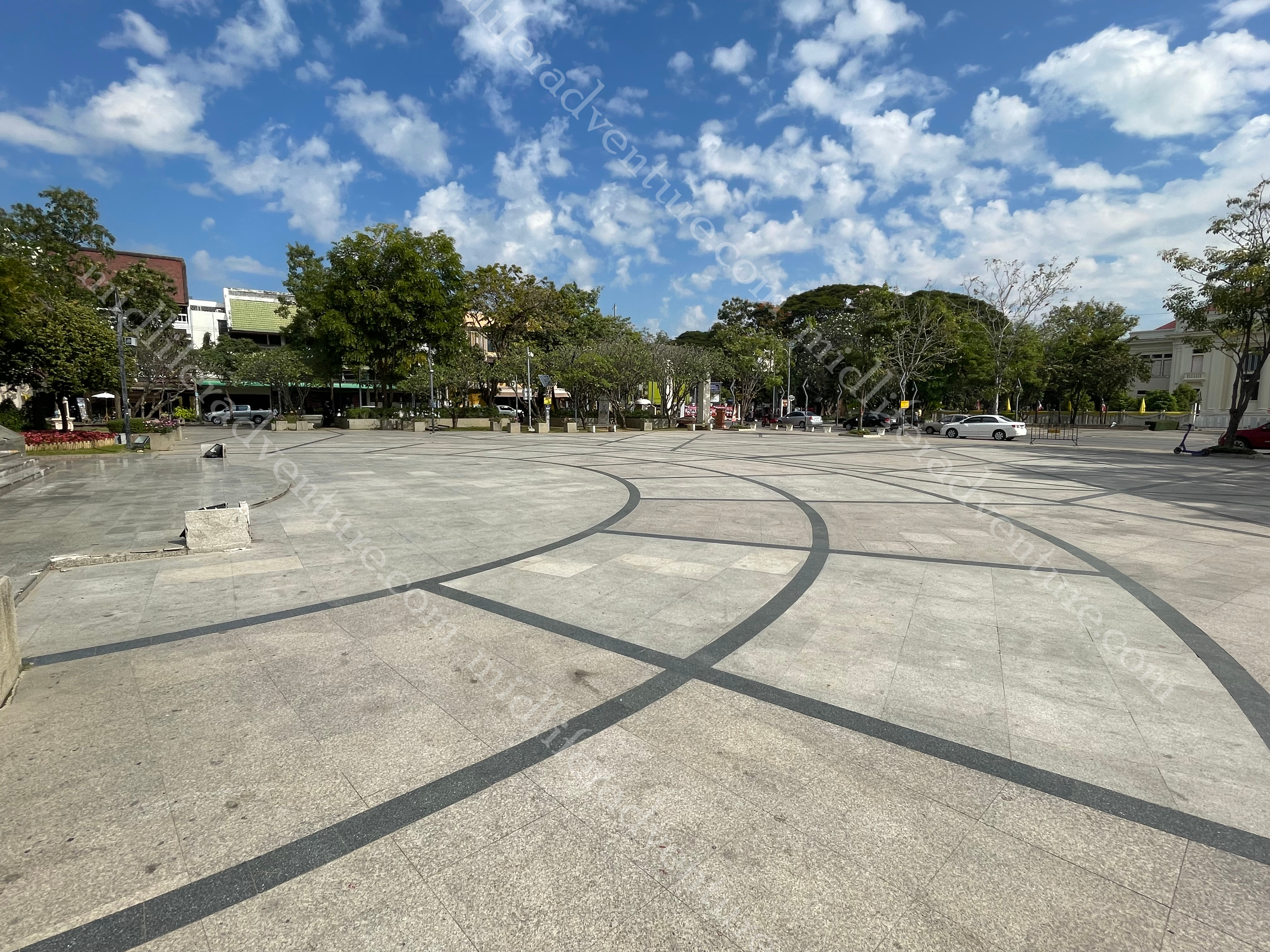
The gates
The Chang Phueak (Chang Puak) Gate faces north and is in very poor condition, however it is the site of the best street food markets virtually every night of the week. Head to the gate, take your life into your hands crossing the road and turn left. There are stall after stall selling almost anything you want for not very much…and it is all good.
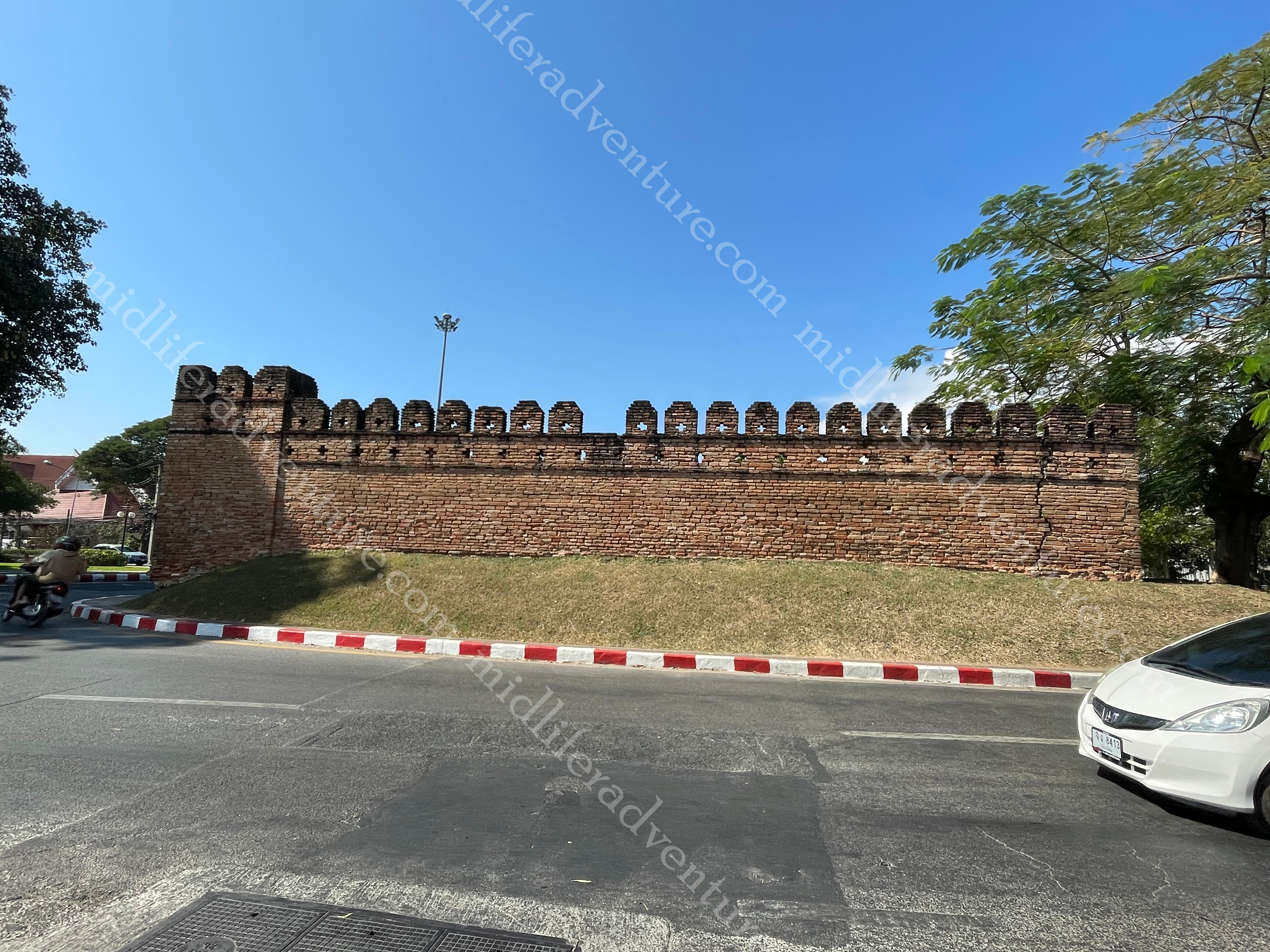
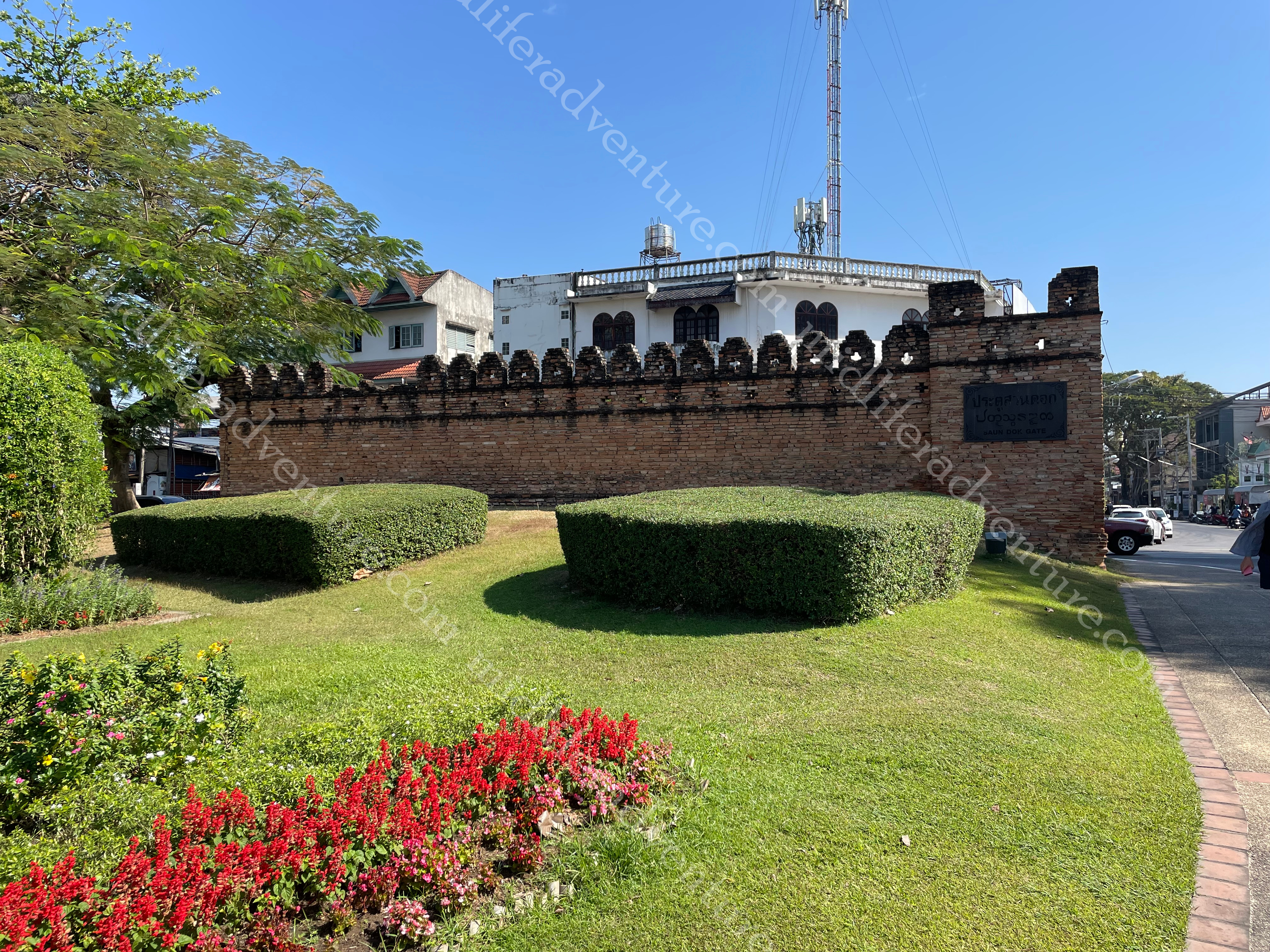

The tha phae gate faces east and is the best, most preserved (renovated) and most tourist friendly of all of the gates of the old city. Because of this it is always busy and has developed an unusual tourist attraction – the pigeons. Groups of roaming touts feed masses of pigeons to get them to cluster then charge tourists money to take photos of them after banging and yelling loudly to get the pigeons to fly. The end result is a lot of noise and some photos of people with birds fluttering about them.


The Chiang Mai gate faces south and is in a reasonable state however due to COVID many of the businesses in the vicinity are closed so many of the shops are not operating.
The Suan Dok gate is to the west and is possibly the second best preserved of the gates. However similar to the south gate many of the businesses are not currently operation (early 2023).
At the north-eastern corner of the city you will find the Si Phum Corner. This is the site of the original unrenovated wall that is slowly crumbling into the canal that surrounds the old city.

The temples around town
As mentioned before, the sheer number of temples in town is staggering and there is no way that I am going to list or visit them all. But here is a sample of some of them and a bit of an idea about each.
Wat Chedi Luang is at the centre of the city and is commonly known as the big temple. Wat Chian Man is the oldest of the temples in Chiang Mai built around 1296-97. Wat Saen Muang Ma Luang (also known as Wat Hua Khuang) is one of the most beautifully maintained and grand looking temples





Wat Inthakhin Sadue Muang was built over 700 years ago and literally translates to “temple of the city navel”, due to its location in the center of old city. Wat Umong Mahathera Chan is not as ornate and is basically a collection of brick stupas for monks to meditate inside.
Night Markets
The Sunday night market (or Sunday walking market ) is the most famous and the most popular but there are night markets oevery day of the week if you care to look a little further afield. As mentioned above in the gates section we regularly hit the night food markets outside the northern gate but it was just for food and not really for shopping.
The Sunday walking market is essentially the one for the tourists and is the most popular with them. It has a wide variety of the expected local art, craft, music. The thing it does possibly better than the others is the incorporation of food stalls (and ore importantly somewhere to sit and eat them) in more than one location. In addition, the various massage vendors are there and on hand to offer a foot massage should it be needed.
Chiang Mai Night Bazaar is probably the largest of the markets with hundreds of shops in one place and it is open every day.

It is outside the old city on the eastern side. This night bazaar offers virtually everything including shoes, bags, clothes, handicrafts, artwork, sunglasses, and electronic items. The Anusarn Night Market, Ploen Ruedee Night Market and Kalare Night Markets are all in the same vicinity and as far as I could tell they would be indistinguishable as to where one stops and the next one starts. But they are all open each evening from 6pm.



The Wualai walking street and Gate markets are situated at or just outside the southern gate of old town while the Wororot markets can be found in the heart of Chinatown.
I got my shoes resewn here for the ridiculous price of $3 as I had a blowout – probably from all the stairs.

Getting Around in Chiang Mai
The local preference and probably easiest for getting around is the Songthaew – pronounced song tail (aka Road-Daeng, Red Taxi or Red Truck). It is basically a converted ute with two rows of seats in the back. The most common one used in Chiang Mai is red and all you need to do is hail one down, tell them where you want to go, ask the price and if it is in the general direction they are heading then they will take you. If not, try the next one. As a guide about 30 baht ($1-1.30) will get you almost anywhere in town. If you don’t want to share your ute with the locals then you can pay more and hire a private one (similar to a taxi).



Tuk Tuk – is the second most common transport however is more expensive than the Songthaew with the rates starting at 60 baht for a short trip and 100 to 150 baht for longer distance.
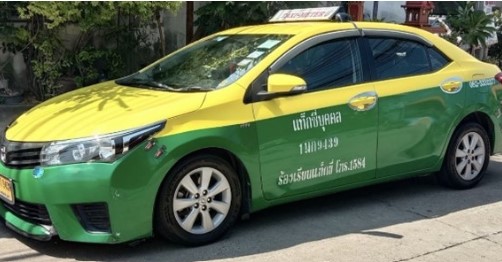
Taxis – There are actual taxis that exist however they tend to park up at the airport, railway station, bus station, malls, and hotels.
Ridesharing – is available and they generally use the apps either Uber or Grab. In fact if you are planning on spending any significant amount of time in SE Asia it is probably worth downloading the Grab app as it is widely used in Thailand, Vietnam, Malaysia, Singapore, Indonesia and the Philippines.
Bus – the Smart city bus was introduced in mid 2018 and for a flat rate of 30 baht you can get on and get around. Coins can be used as can the rabbit card that is used in Bangkok for use on the MRT or the BTS Metro Systems. Two tourist card options can be bought that will give you unlimited riding for 180 baht for one day or 400 for 3 days.
Samlor – this is the traditional Thai rickshaw – powered by some skinny old guy pedalling you around. I cannot tell you the prices as I can not bring myself to order one. The thought of a 70 year old, 40kg Asian dude struggling to peddle my fat ass around is something that I will just not do.

Rent a motorbike – this is very cheap at about 100-200 baht for 24 hours that will get you a 100cc motorbike and 2 helmets with the more powerful 110-125cc bikes with automatic transmissions costing more. Beware some places will want to keep your original passport as collateral. Also as a westerner you will be stopped frequently by police to check that you have your helmet, international licence and that the bike is not too powerful (read here that you will need to bribe your way out if you do get stopped).
And of course car rentals and tours are always available.
Things to do around Chiang Mai
Wat Phra That Doi Suthep
This is the most famous and most frequently visited of the temples in the region It is easy to get to (about 15 km from town) with most of the transport options (explained below) getting you there with very little fuss. It was built in the early 19th century and is set atop a hill with amazing views over Chiang Mai.

Upon arrival you are met with the usual tourist stalls before you find the stairs (306 of the buggers) to the temple. The stairs are lined by the seven-headed serpent statues (naga) – there is a funicular if you really are not up to the stairs.
Once you have made it up the hill you will find the temple where a golden pagoda sits that is said to contain a bone from buddha’s shoulder. On the terrace you will find a statue of the white elephant that allegedly carried the bone to the temple. As usual for this sort of place you will also find the obligatory shrines and monuments. For those willing to pay the money there is also a night tour available.
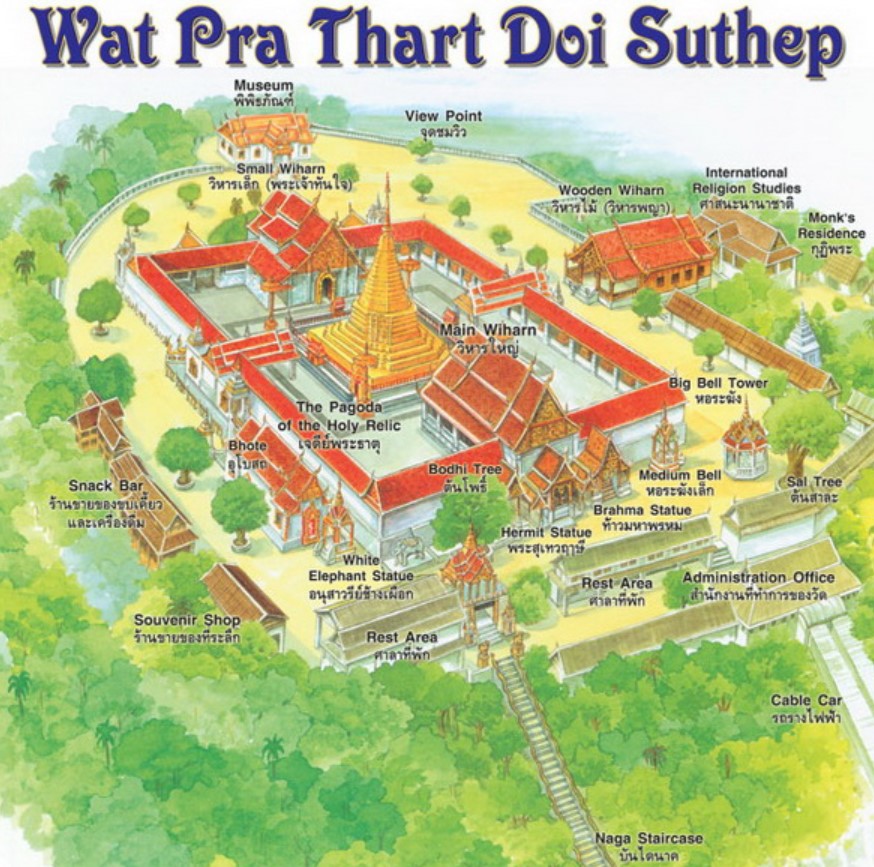


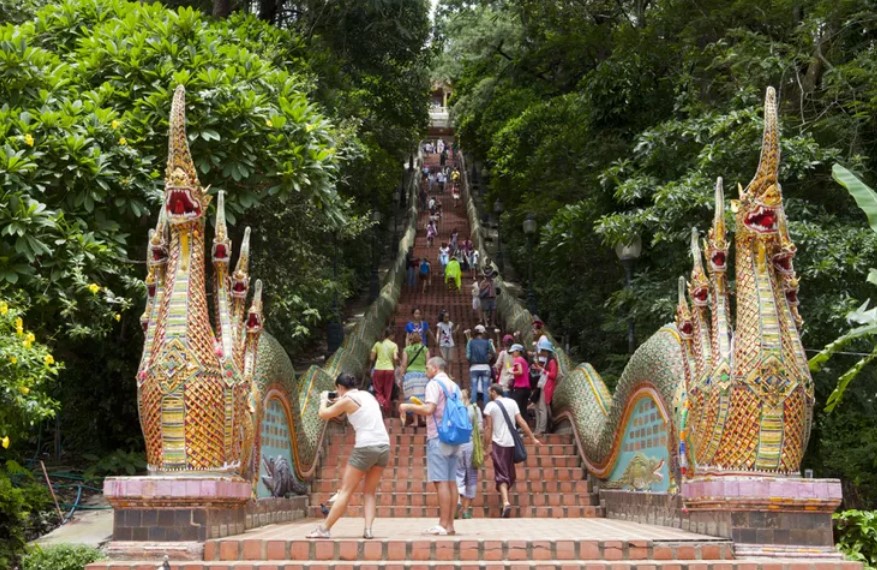

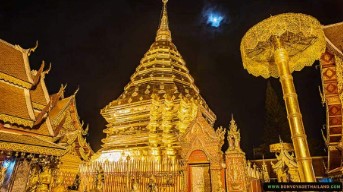

If you are willing to pay a little more and take a private trip, there is a night tour available.
Bhubing Rajanives Palace was built in 1961 as the king’s residence when he came to stay in Chiang Mai. It is about 22 kms from old town on Buak Ha Mountain. The gardens are perfectly manicured with extensive plantings that would send a gardening nut into fits of rapture. From my side…it was very pretty.



Doi Inthanon National Park is the highest point of Thailand and home of the beautiful King and Queen pagodas. There are tours heading here all the time and many of them will include some of the items listed below as well. This is a truly stunning spot and well worth the visit. While there are a ton of stairs to get to the Pagodas they have thoughtfully considered us old buggers and put an escalator (up only) to the top of each side…very civilised.















Chiang Mai Zoo and aquarium is a is a 200-acre zoo with over 400 species of animals that includes a 133m aquatic tunnel and they have a night safari. Oh Claudia, if you are reading along…they have pandas.

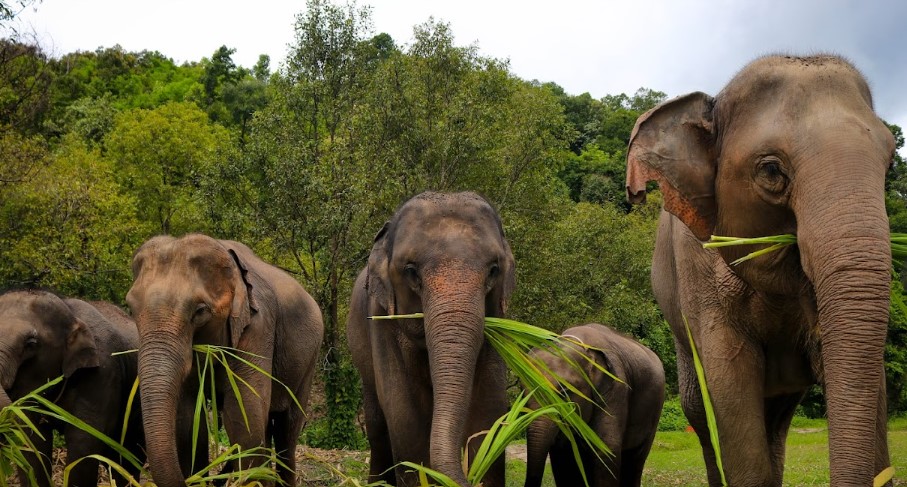
Elephant Sanctuary – The Meaklang Elephant Sky Camp is reported to be an ethical Elephant Sanctuary where the elephants are taken care of very well. The ads recommend that you bring spare clothes and a towel for if you join in to the elephant bathing.
As we have done numerous elephant sanctuaries in Sri Lanka and Laos we chose to skip this but those we met spoke highly of the experience.
Wachirathan Falls is one of the largest and most beautiful waterfalls in the country at over 80 meters tall the waterfall creates a mist that feeds the surrounding vegetation. Sirithan Waterfall is a stunning 50-meter cascade, fed by the Mae Klan River. Paths all around this one gives you many angles and photo opportunities.







Chiang Mai Street Art
Similar to Penang, Chiang Mai has a thriving street art scene that has not been advertised and is rarely written about. So much so that we didn’t even know to look but Jill kept stopping and taking photos of these amazing scenes or funky pictures. The same sort of thing exists in Penang but somebody has put it together as a tourist attraction as a sort of hide and seek for the artworks.
The same thing could easily be done here. I am certain that we have missed a heap of these and a google images search assures us that we have, and we saw others but parked cars ruined photos. The bottom line is that if you care to look there are amazing artworks often hidden down tiny alleys or side streets and if you are willing to roam patience is required to find these hidden gems.
Long story short – here is a business opportunity for anyone willing to make a map and add it to the tourist agenda. A complete list of the artworks and a treasure map of where to find them would keep people amused for hours and would add greatly to the local tourism scene and things to do list.



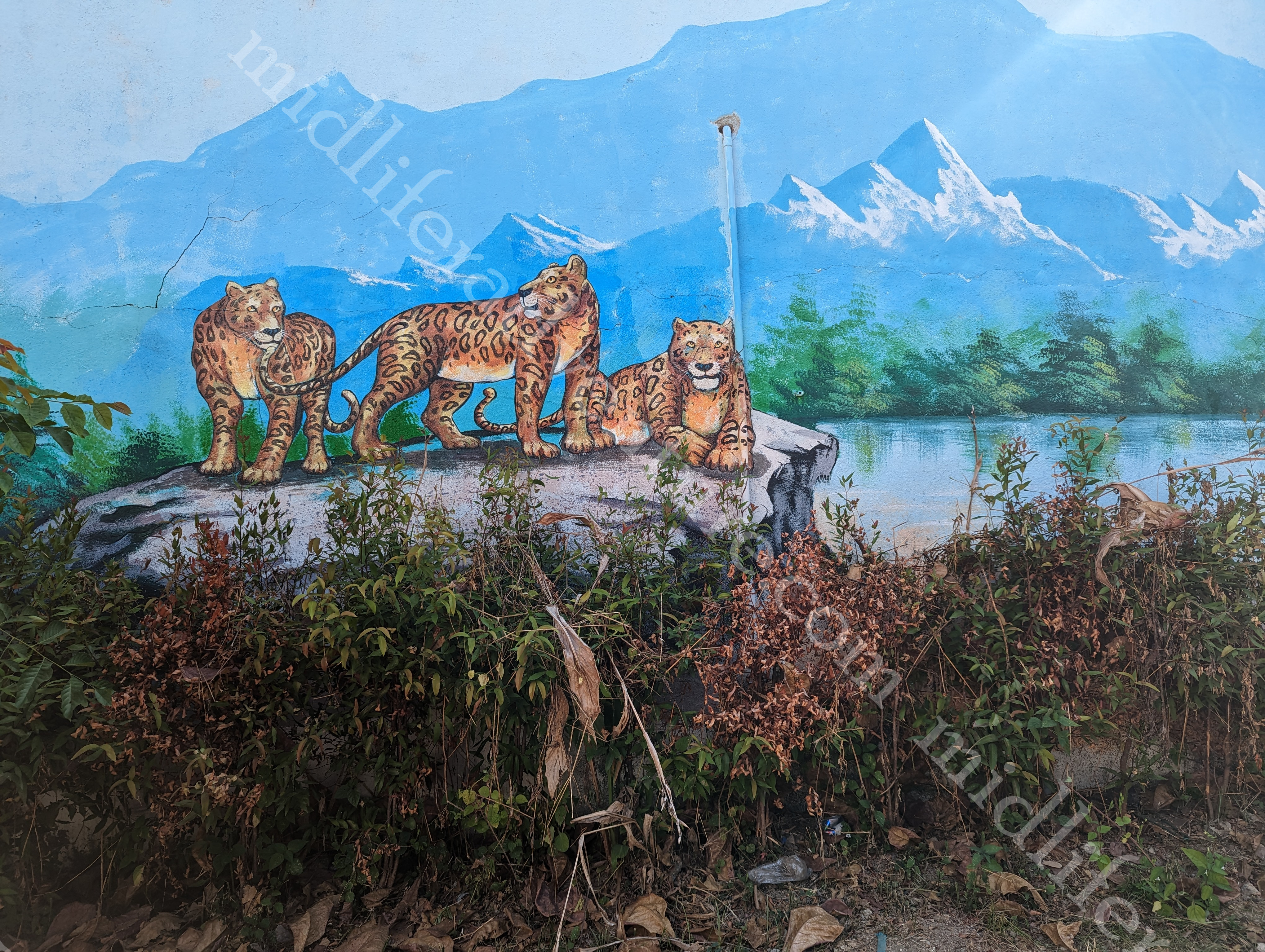

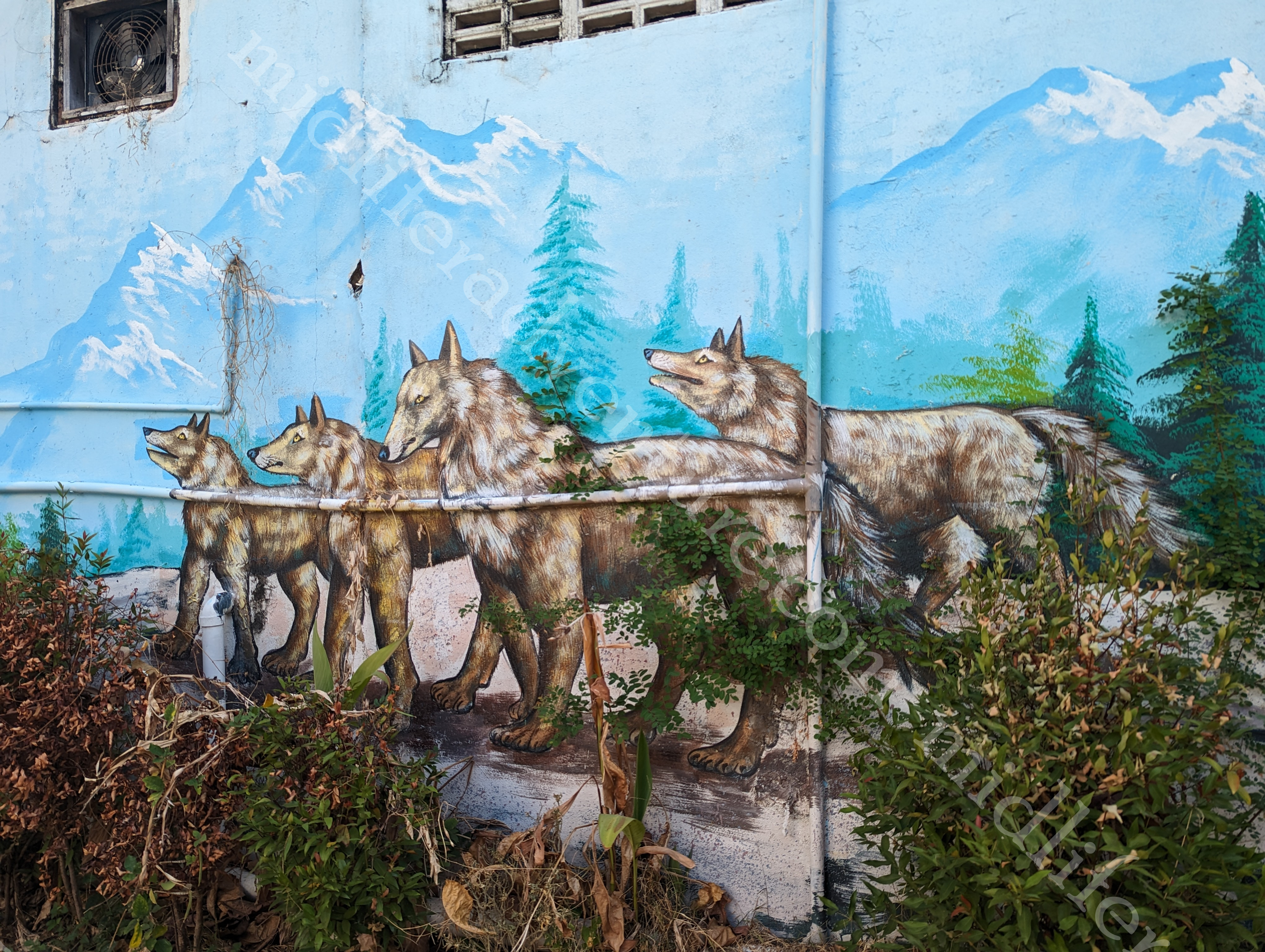




























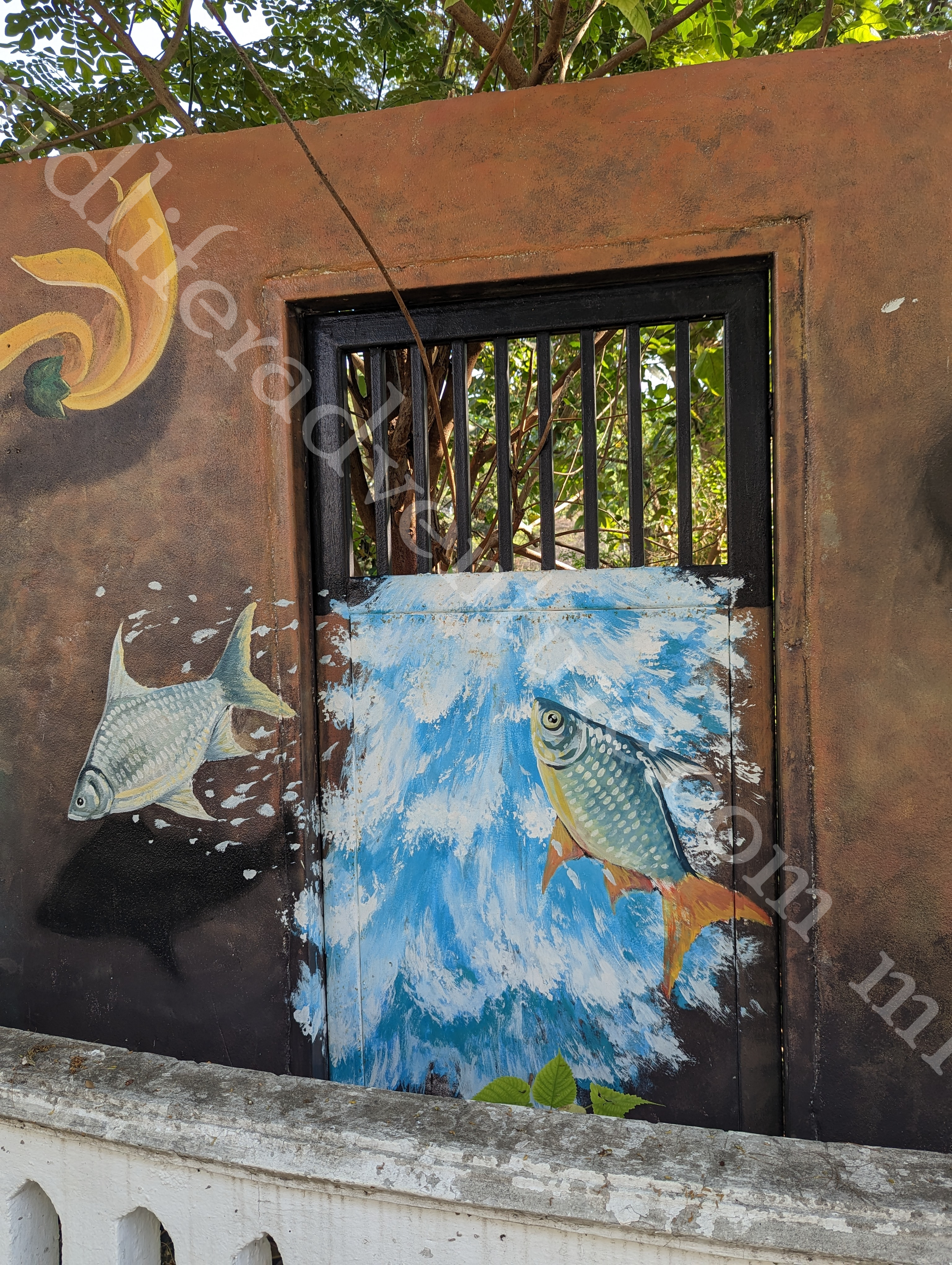









Weed-Cannabis
This bit surprised me a little given all that we Aussies have heard about Thailand’s tolerance of drugs – or lack thereof. Cannabis can be bought simply and easily almost everywhere through old town and beyond. The smoking of weed is totally legal at home or in private places but not in public.



WARNING – Fines for smoking weed in public are about $1000-1200 Australian and 3 months imprisonment.
This was either unknown to the backpackers or they just didn’t care as it didn’t seem to stop them smoking away as they walked down many of the streets and alleys late at night.
Chiang Rai
Chiang Rai was a name that we had heard but never really paid attention to. It kinda followed Chiang Mai as places to see but never really struck us as a place to go. When you are doing your planning and do a quick what’s there search you will find the White Temple, The Blue Temple and the Black House Museum.
From there if you click through to images the White temple will blow you away. From that point alone we figured that we had to go.

The two cities are only a 3 hr drive apart and as such a general search of things to do will roll the Chiang Mai and Chiang Rai attractions together. In fact, there are return day trips from both cities to see each other’s attractions – albeit a pretty long day.
Getting to Chiang Rai
This bit was pretty easy as from Chiang Mai there are loads of options. We opted for the bus. We paid top dollar for the first class bus 300 baht ($15 each) but the bus was delayed and then merged with another route so we got downgraded to a lesser bus and was refunded 100 baht each as we boarded the bus. Either way, the bus we got was perfectly reasonable so sit down, stare out the window and 3 hours later you are being delivered to the heart of town.
You could have paid more and taken a private car but the time would have virtually been the same and the air-conditioned bus was comfortable enough for such a short trip. That said I don’t think I would want to go much further in a bus.
Chiang Rai Central
Our first 5 minutes in Chiang Rai put us back in the Thailand we remembered – right in the midst of the girly bars. This is something we did not see once in Chiang Mai ( I did google it later – they were there we just didn’t see them). But within 300 meters of our hotel there they were, scantily clad and asking all of the usual questions. As it turned out this had more to do with where we were living as really this scene in Chiang Rai is fairly small. Oh yes, and the weed is still everywhere.




The center of Chiang Rai is actually pretty small and it is easy to get around just about anywhere on foot (notwithstanding the state of the footpaths). There are some Wats, some lesser-known and smaller attractions within easy walking distance and some a few kilometers from town that may warrant a tuk-tuk. Things like the clocktower, hilltribe museum, Mae Fah Luang Art and Cultural Park (see temple artifacts, botanical gardens, and traditional teakwood houses) the Oub Kham Museum (artifacts of the Thai royal family).







The clocktower is at the centre of a roundabout near the heart of town. It was built in 2005 by a local artist to honour Queen Sirikit. This thing is seriously ornate and the street is lined with ornate railings. If you come at night there is a light show that starts on the hour (7pm, 8pm and 9pm) and goes for 5 mins.
The Night Bazaar
The night market is a lively place just behind the bus terminal. It has a variety of options for eating and drinking with the usual tourist trinket fare available for purchase. There are lots of shops around that sell everything from clothing, hats, toys, shoes, glasses, etc. There are even a few breakout areas where you can sit and listen to music and have a drink.



The White Temple – Wat Rong Khun
Well, this is the main reason for everybody coming to Chiang Rai and I must say, it does not disappoint. It is phenomenal. The masses of people are a challenge but that aside, this place deserves its place as the top tourist attraction.
By way of background this place was getting pretty run down so in the late 1990s a local artist from Chiang Rai (Chalermchai Kositpipat) bought it and decided to completely rebuild the temple and fund the project with his own money. Most of the symbolism blurb below has been drawn from the tourist spiel that is available everywhere.
The main building at the white temple is reached by crossing a bridge over a small lake. In front of the bridge are hundreds of outreaching hands that symbolize unrestrained desire. The bridge proclaims that the way to happiness is by foregoing temptation, greed, and desire.





Next to the lake stand two very elegant Kinnaree, half-human, half-bird creatures from Buddhist mythology.
After crossing the bridge, the visitor arrives at the “gate of heaven”, guarded by two creatures representing Death and Rahu, who decide the fate of the dead.


Having been judged, you cross the bridge representing “the cycle of rebirth”. This is meant to signify the crossing over from the cycle of death and rebirth into a state free of suffering. It symbolises the way to happiness by overcoming worldly things as temptations, greed and desire.



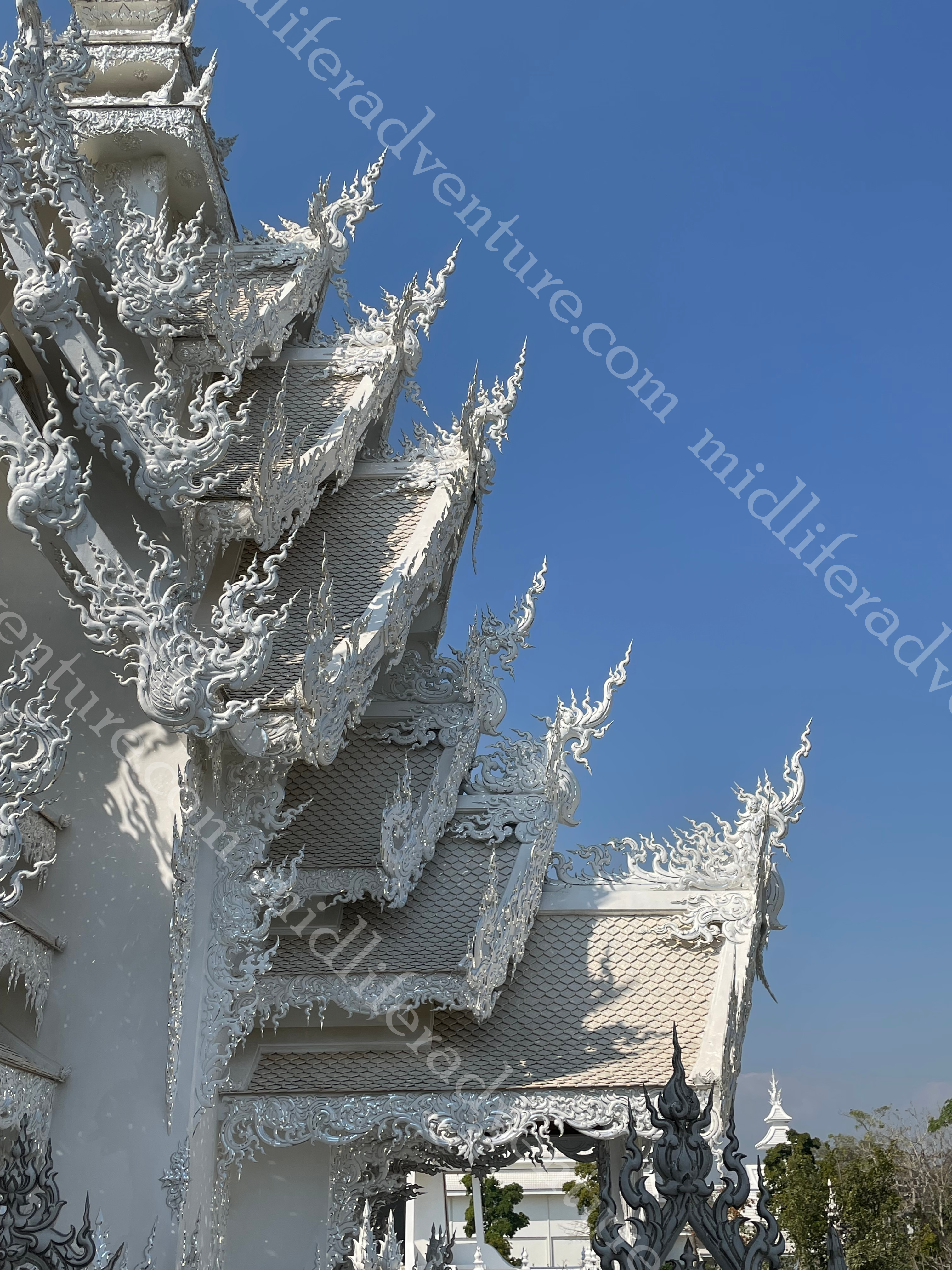



From here you enter the temple (no photos allowed) and are then free to tour the expansive grounds. Where you will find all sorts of interesting features many of which will be highly unexpected. The area adjacent to the temple is intended to house, the centre of learning and meditation and help people benefit from the teachings of Buddhism.








Around the temple grounds are several concrete “trees” with thousands of medallions hanging down from them (Bohdi Leaves). For 30 Baht you can add yours with your name written on it. With all of the visitors that have done this, it has now spilled out from the trees and there is a long walkway the ceiling of which is made up of these medallions.

All around the grounds of the white temple you will find an eclectic mix of paintings, sculptures and murals that depict modern representations of good and evil.


The best game that can be played is to try and find and identify the sculptures representing good and evil. We found many but I am certain that there were many more that we never even saw.
Even hidden in a waterfall you will find a heap of these figures and sculptures. Figures like Batman, Spiderman, Elvis, ninja turtles, the predator, venom – villains and superheroes from movies and comics.
But you really need to look or you could miss them






One of the most heavily photographed buildings there is this golden pavilion. Swarms of people are constantly posing in front of its beauty. Believe it or not…it is just the public toilet.

The Blue Temple – Wat Rong Sear Tean
Like the White Temple, this temple is totally different from almost every other that you will see throughout Thailand. It is about 4km from the heart of town, so a short tuk tuk ride – but in our case a fairly decent walk. Unsurprisingly the Blue Temple is blue a colour symbolically associated with purity, wisdom, and the lack of materialism that Buddhists aspire to. The name translates to mean the temple of the dancing tiger.




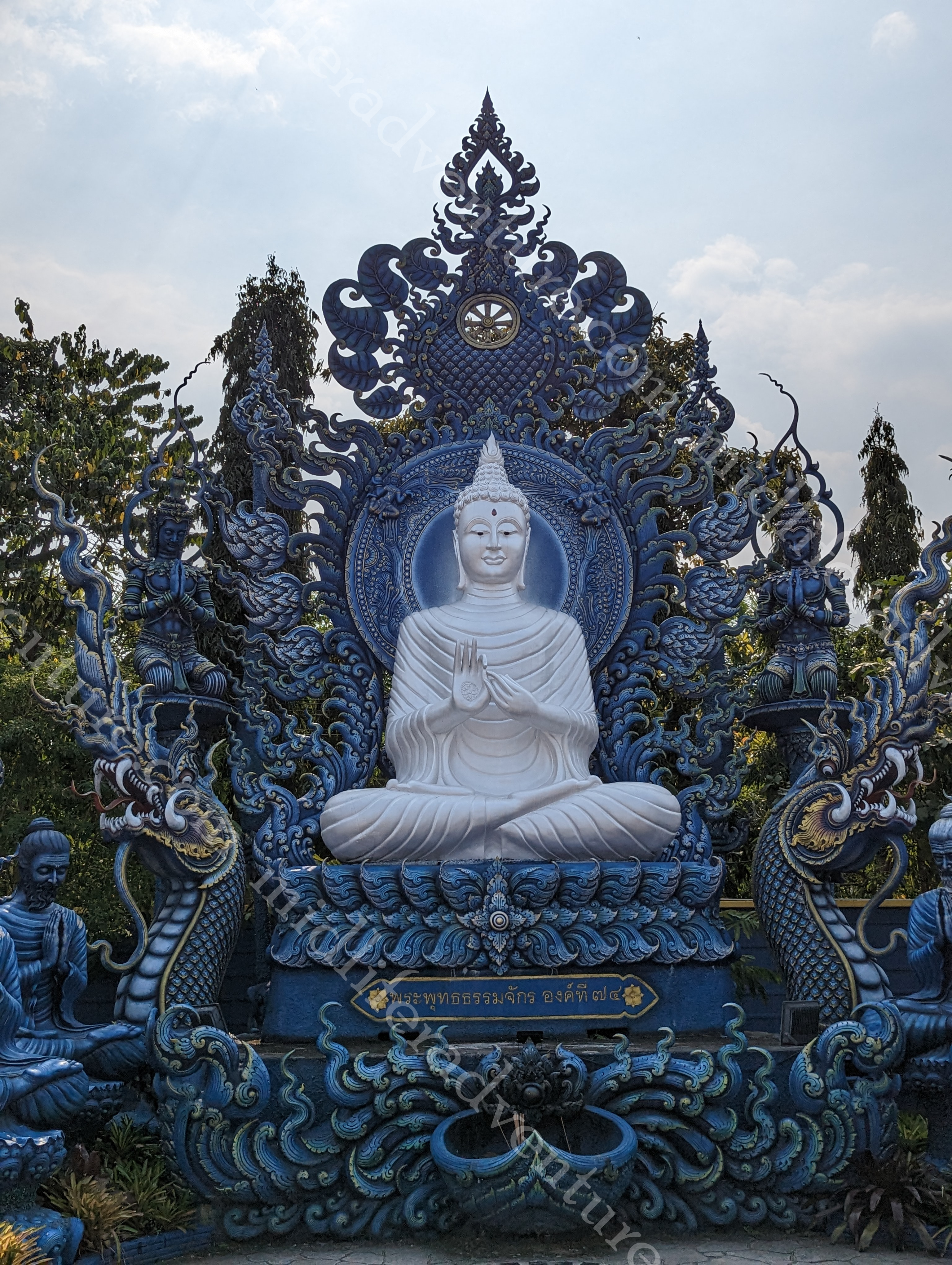


It is truly stunning this place. We have been in and out of Thai temples and they are all very lovely, intricately carved incredibly ornate and all very much similar. But even though you know it will be different this place takes it to another level. An absolute must see.
The Black House Museum – Baan Dam
The museum covers an area of about 40 acres and has over 40 different structures scattered around the site. The artist who designed and created the Baan Dam Museum (Thawan Duchanee) wants to turn this into a national arts and cultural learning centre. A bit like the white temple the place is covered in art and installations.




It gave me more of a sense of an old-school furniture shop more than a museum. Except that the furniture had been made from dead animals (notably water buffalo horns and skulls) and taxidermied animals such as crocs, snakes and even a wolf were used as table runners.







Everything is painted black and deep brown with big, intimidating-looking doors. The walls, floors, and even ceilings of the buildings are covered with paintings, sculptures, installations. But mostly there was just a lot of furniture made from animal skins, bones, and horns.
The big buddha – Wat Huay Pla Kang
While everyone calls it the big buddha it is not a buddha but actually a 23-storey high white Guan Yin or the Goddess of Mercy. In addition, there is a 9-tier pagoda (temple) guarded by golden and green nagas and of course… there is a ridiculously long staircase to get to it. And Hello Kitty busses to ferry the tourists who don’t want to walk.




Chiang Rai Flower Festival
Ok, so this was sheer dumb luck. It just so happened that our journey coincided with the Chiang Rai flower festival. We were headed to the 75th anniversary flag and lamp park (built for the king’s 75th birthday) when we found that the park was in the midst of the flower festival. Orchids, tulips and many more perfectly sculptured flower displays were sprawled out all over the park. Add to that some strategically placed dry ice in water to make an eerie mist and it was lovely. As I am not really a flower guy, I will just shut up and show you what we stumbled upon.




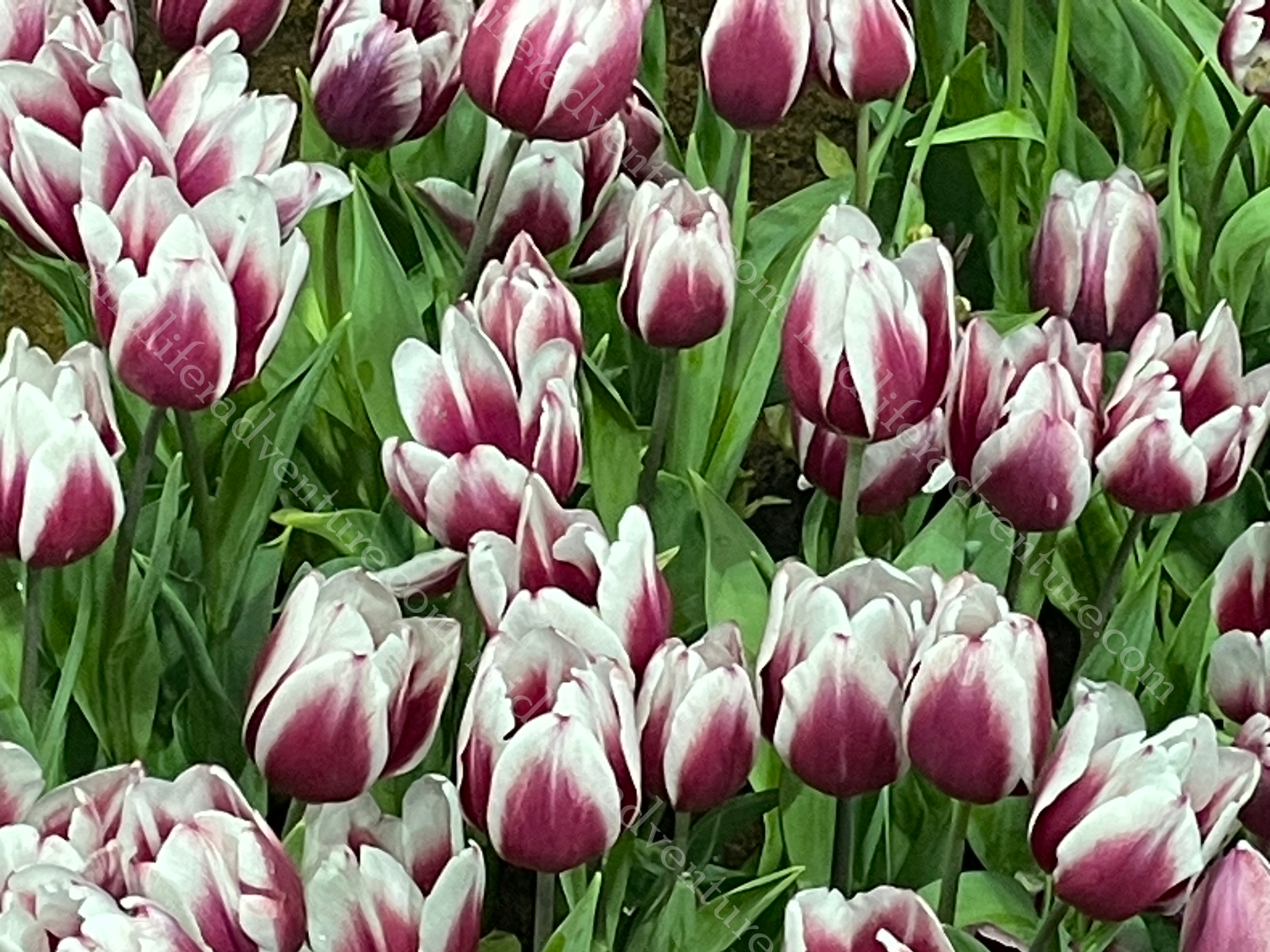




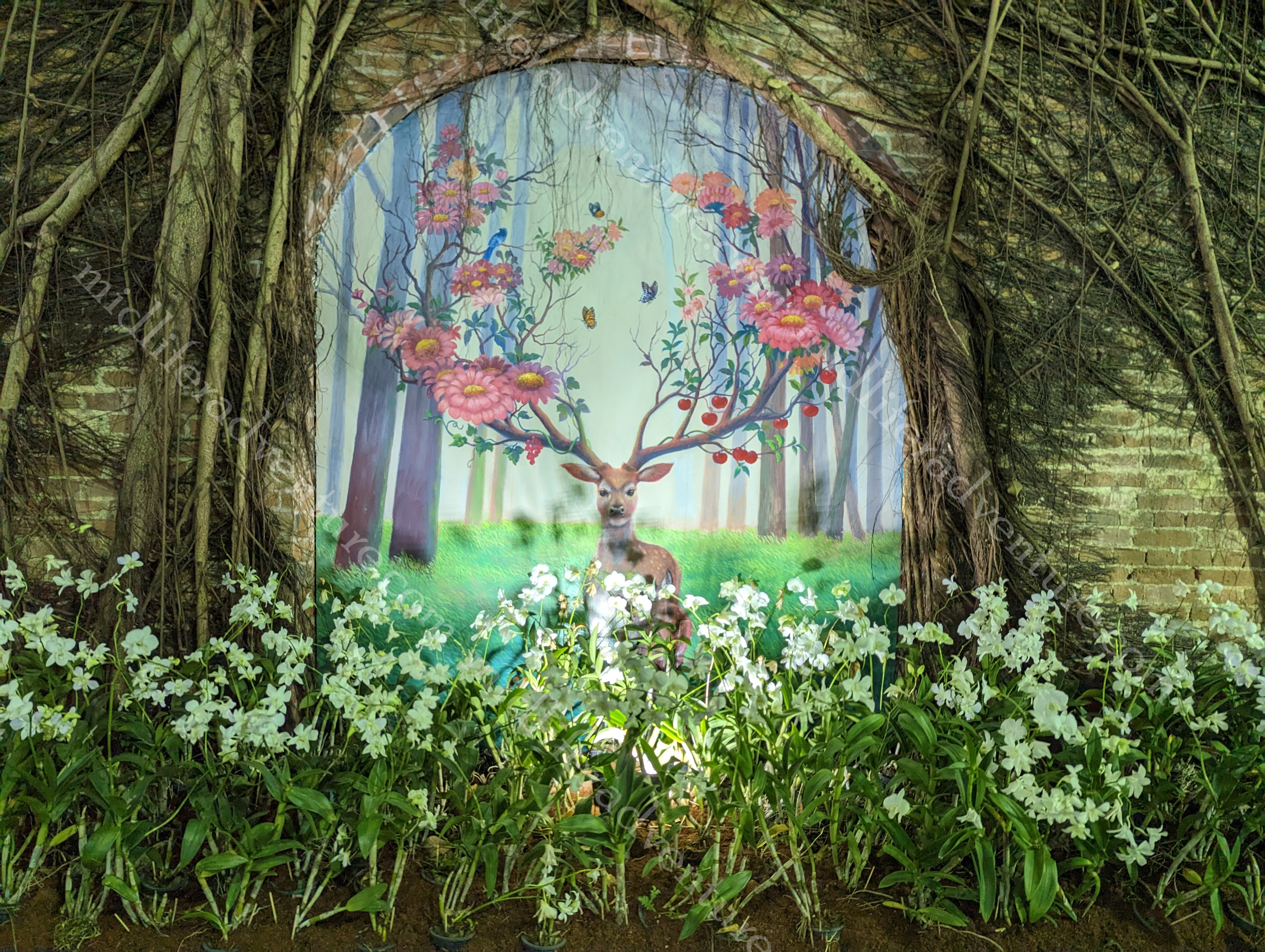



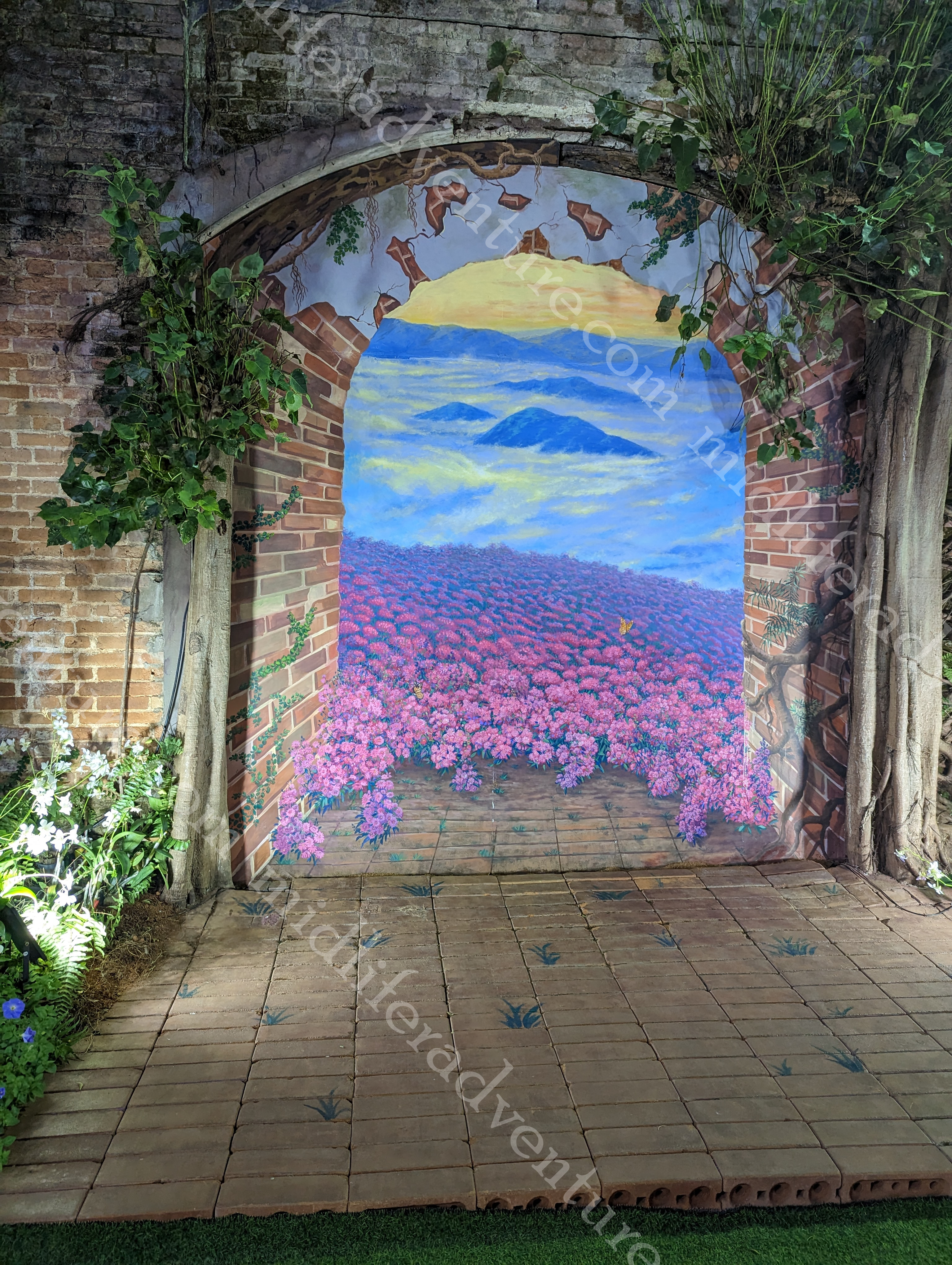
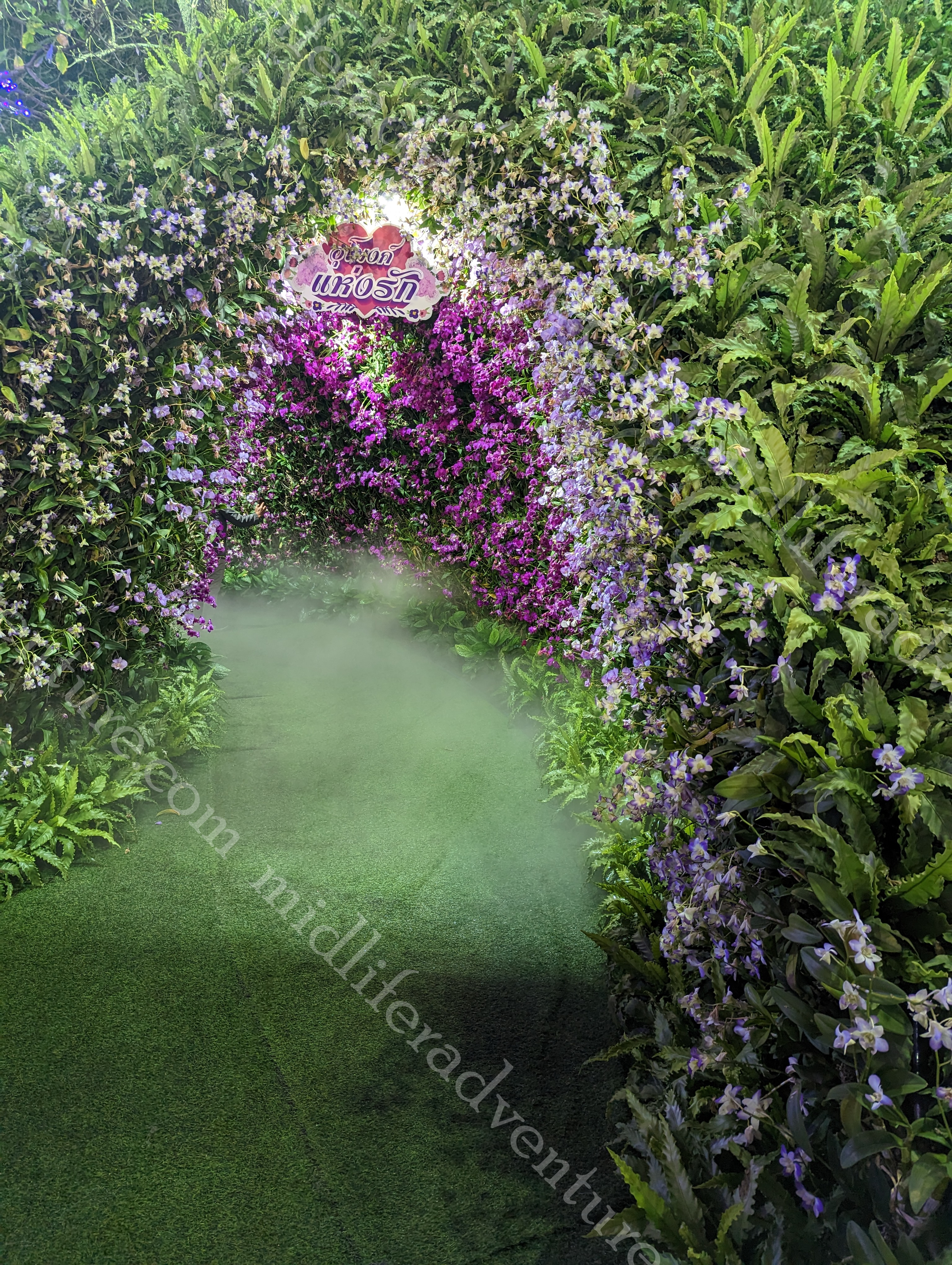


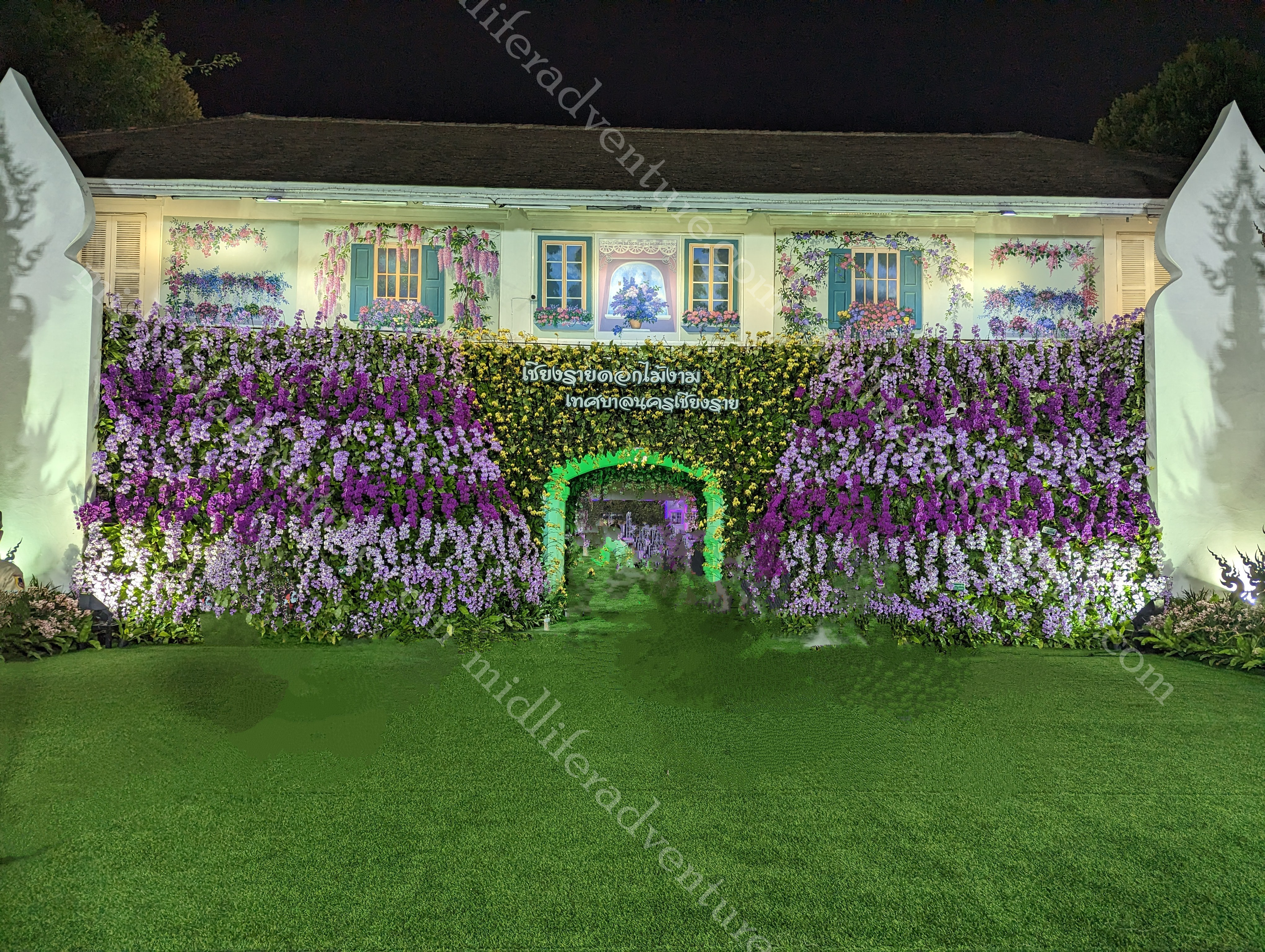

Much more interestingly for someone like me is that they had turned the nearby walking street (an occasional market) into a huge nightly market (with seating) with a massive selection of food that was so cheap that it almost rivalled Cambodian prices (bearing in mind that everything in Thailand is about 2.5x more expensive).



Chiang Mai was much better than I expected. Most people come and do an overnight here but as you can see from above there is much more to see and do here than that. We were here for 7 days which gave us plenty of time to see what we wanted without busting a gut.
Things around that we didn’t do
Wat Tham Pla- the Fish Cave Temple or Monkey Temple
I will state upfront we did not go here and the couple of photos are not ours. This is a Buddhist temple at the foot of the Doi Nang Non mountain range. This is the same mountain range where the soccer team had to be rescued from a cave a few years back. The entrance is guarded by a massive staircase 7-headed Nagas (mythical serpents) and the temple is basically the same as all others – but in a cave.



The main reason we did not go here is that it was 50km from town and the temple was infested with monkeys (northern pig-tailed macaques to be precise). Even the official websites tell you that the temple is overrun with monkeys and reviewers tell us that they are quite menacing and are known to jump on unsuspecting tourists and snatch their things – so visit at your own risk!
Visit the remote Karen Hilltribe Village

Karen hill tribe villages are scattered all across northern Thailand and can be found in just about every province. Many traditional villages can still be found in remote areas of Thailand. They tend to dress in traditional clothing and live in primitive bamboo stilt houses.
As we had seen and got photographed with them in Myanmar, we chose not to do the 50 km trek to see them again.

Visit the Golden Triangle

This is the tri-border area of Thailand, Laos and Myanmar once renowned for the opium and heroin trade. Having been to all three countries already we passed on seeing the sign.
Phitsanulok and Sukhothai
OK so let’s be honest here, I had never heard of either of these two places and trying to remember them has been no easy feat. My early attempts at even trying to pronounce them have been less than stellar. The early attempts resulted in a very unhappy and uncomfortable item of poultry and a very happy local inhabitant.
Phitsanulok
Important note…the transport here from the airport to town is atrocious. We flew in via Bangkok and two plane loads arrived at the same time. Every cab in town (about 15 of them) was there to greet the plane. They filled (with the people with carry on only) and left for the 8 km journey to town, but almost none returned.
At this point I really need to stress the importance of getting, downloading and using the grab app.
From this point on you had to order your own car from the Grab or Uber apps, despite the fact that another 200 people odd are waiting to get to town. Cabs arrived and searched for the person who called them. There is no line, no queue, no order it is mayhem. We were off virtually first (seated in row 2), had our bags first (priority luggage) but were virtually the last two to leave the airport. They almost turned the lights out as we fought to get a car to town.
We finally got a car using the Grab app and got to where we wanted to be. First impressions…OK we are in the backblocks now. Phitsanulok was founded over 600 years ago and was one of the provincial centres of the Khmer Empire. Today it serves as a major transportation hub for the region with planes, trains and busses all routing through here. While this place may be a transport hub, it is a truly Thai town and there is not too much for tourists to do here.
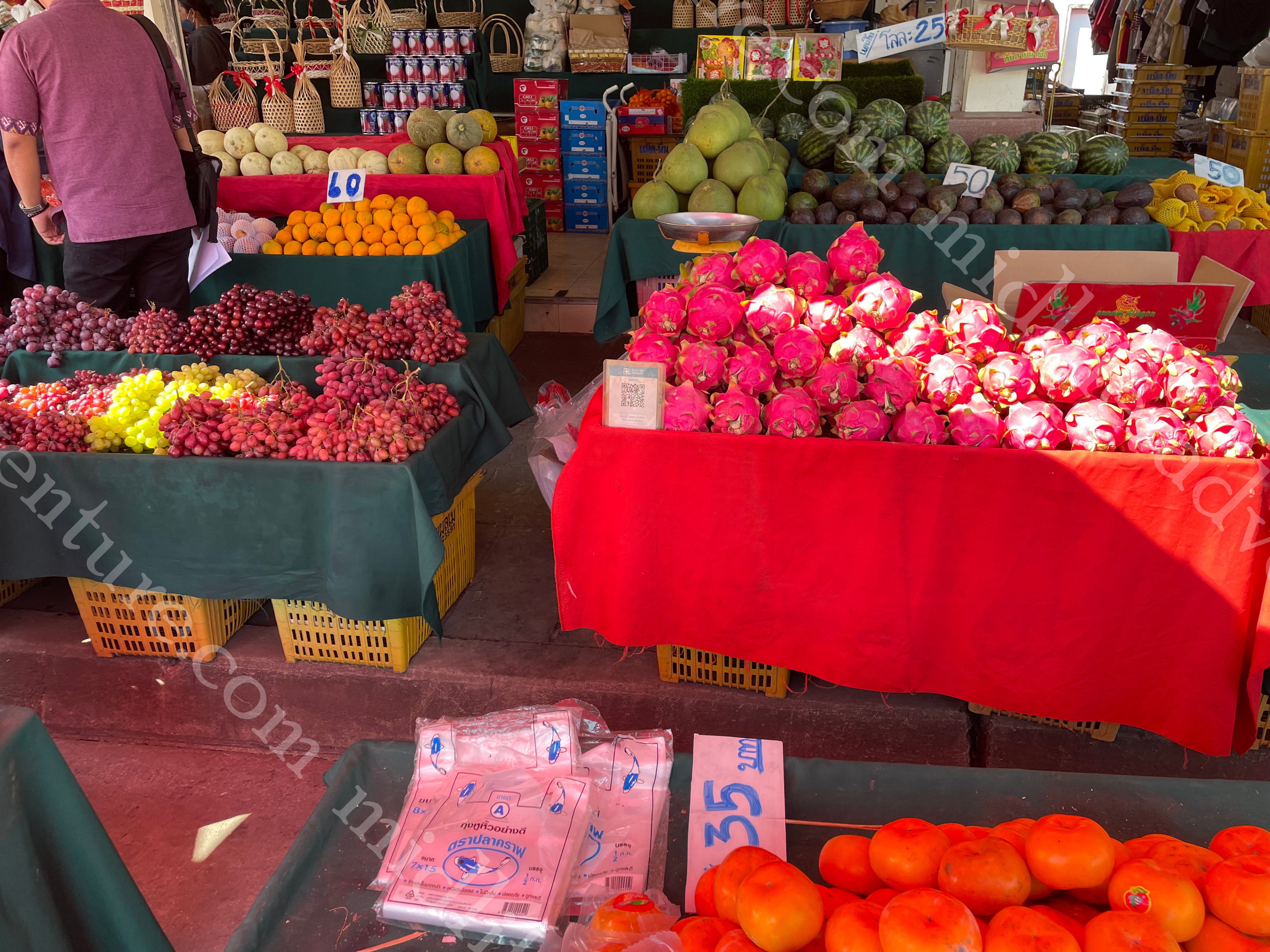
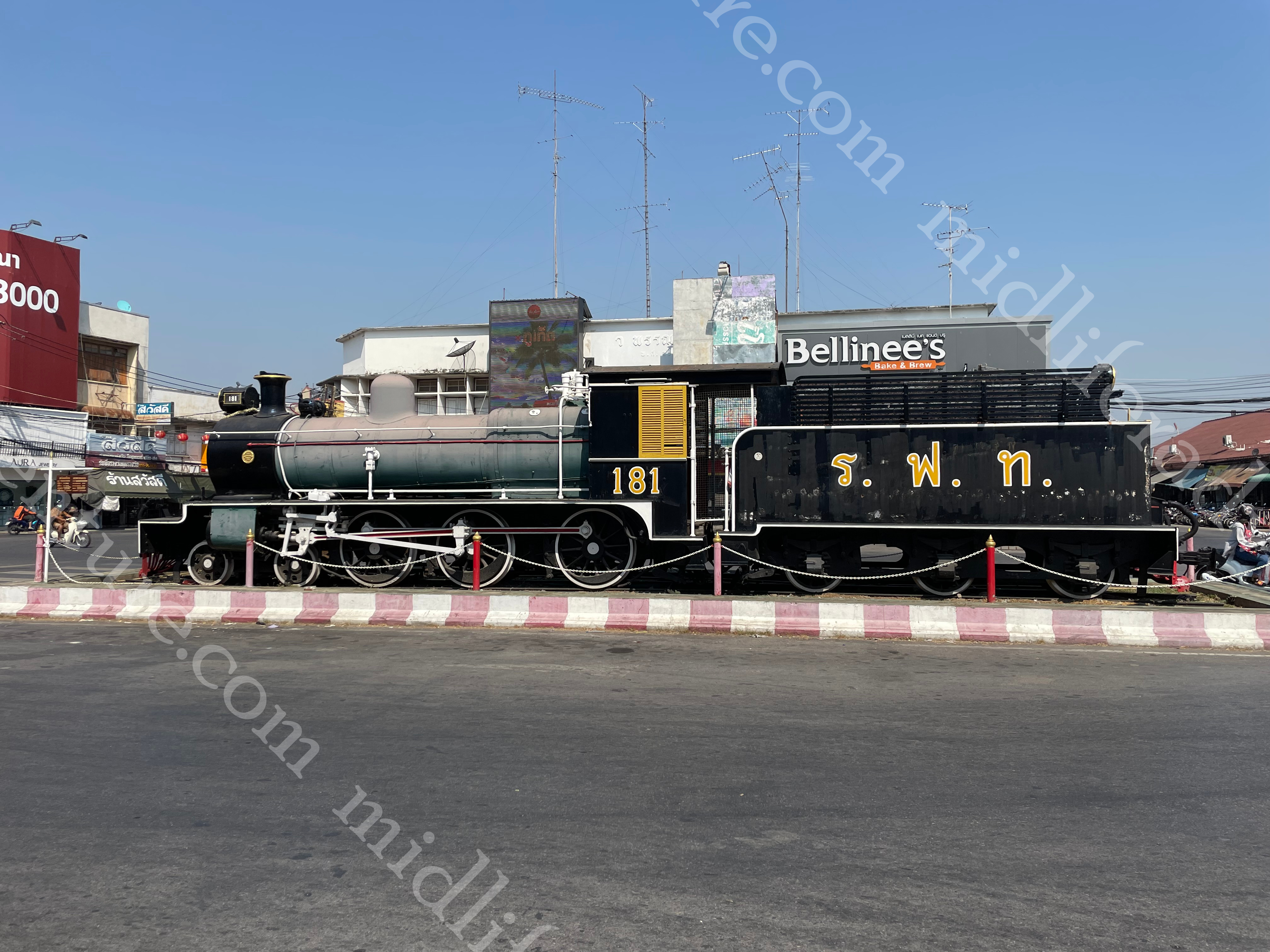


Don’t get me wrong, it is nice but the food vendors sell food to and for locals. In plastic bags, designed to be taken home and eaten. There are very few if any tables (even the little plastic numbers) where you can sit down and eat your meal. In addition, if you have not eaten by 8pm you will not eat. Everything shuts up early and people go home. Oh, and as you head south…it gets hotter. This place is noticeably hotter than both Chiang Mai and Rai.
As you would expect, Phitsanulok has its fair share of Temples and Wats.





Wat Phra Sri Rattana Mahathat was built in 1357 and is home to the Phra Buddha Chinnarat. This is meant to be one of the most beautiful and revered Buddha statues in all of Thailand and serves as the official symbol of the Province. I get that I am a bit of a heathen, but I truly cannot tell what makes this one more beautiful than any of the thousands of others that we have seen.

The Night Bazaar, Chan Royal Palace Historical Center, and the Buddha casting factory are all nearby and if you are hunting for things to see and do then they are available.
Sukhothai
Sukhothai and the area around it were part of the Khmer Empire until the early 13th century. When the Khmer Empire began to decline, the local population (called Siam) revolted and assumed power under the leadership of King Si Inthrathit. they called their new empire Sukhothai which literally translates to “the dawn of happiness”.


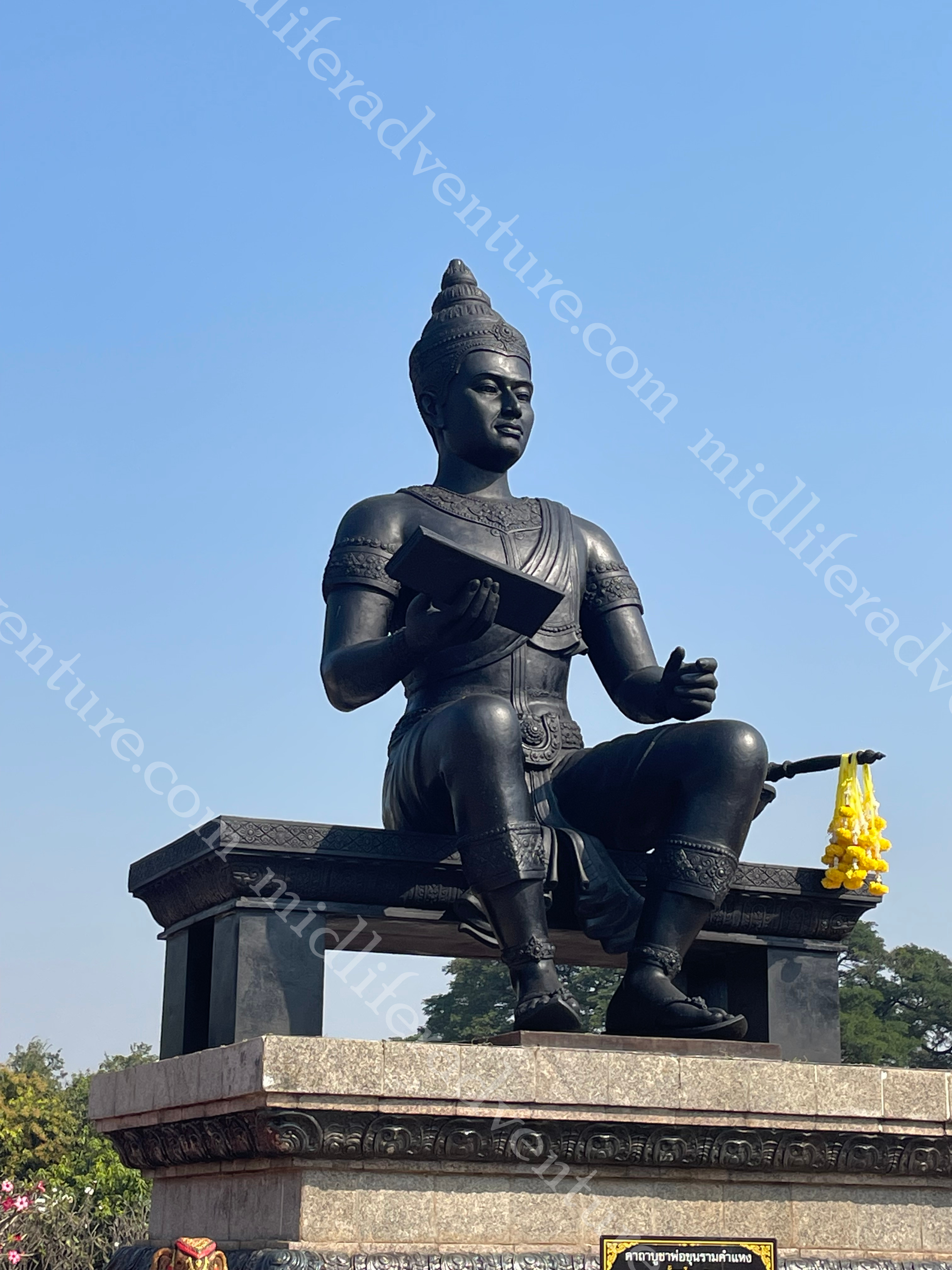

This Kingdom lasted for 200 years (1238-1438) and is credited with the invention and development of many of the unique identifying characteristics of Siamese (Thai) culture. It was the birthplace of the Thai language and where Theravada Buddhism became Thailand’s state religion. Many of the advancements have been attributed directly to King Ramkhamhaeng, who is considered the Founding Father of the Thai Nation.

Sukhothai Historical Park is the UNESCO listed) home of most of the historical elements of the early foundations of Thai culture. It is divided into 5 zones (N,S,E,W and central) with most of the elements in the central zone.
Sukhothai Historical Park covers 70 square kilometers and contains over 190 ruins which are pretty well spread out.
How much, how long and how
The cost to enter each zone is 100 Baht per person, so going to each of the 5 zones will cost a couple 1000 Baht ($50). The central zone contains most of the more impressive ruins and can be navigated on foot in a few hours (this will get your 10,000 steps up). There are options to hire bicycles and (very cool looking) electric golf buggies (that will reduce this timing) and will allow you to get to all five zones within one day.



We chose to spread our visit out over two days rather than power through and exhaust ourselves. Part of this had to do with the fact that our hotel was absolutely lovely (Foresto Sukhothai Guesthome) and warranted a bit of extra time.




So day one was on foot and took in the central zone with a day off before tackling the outer zones.

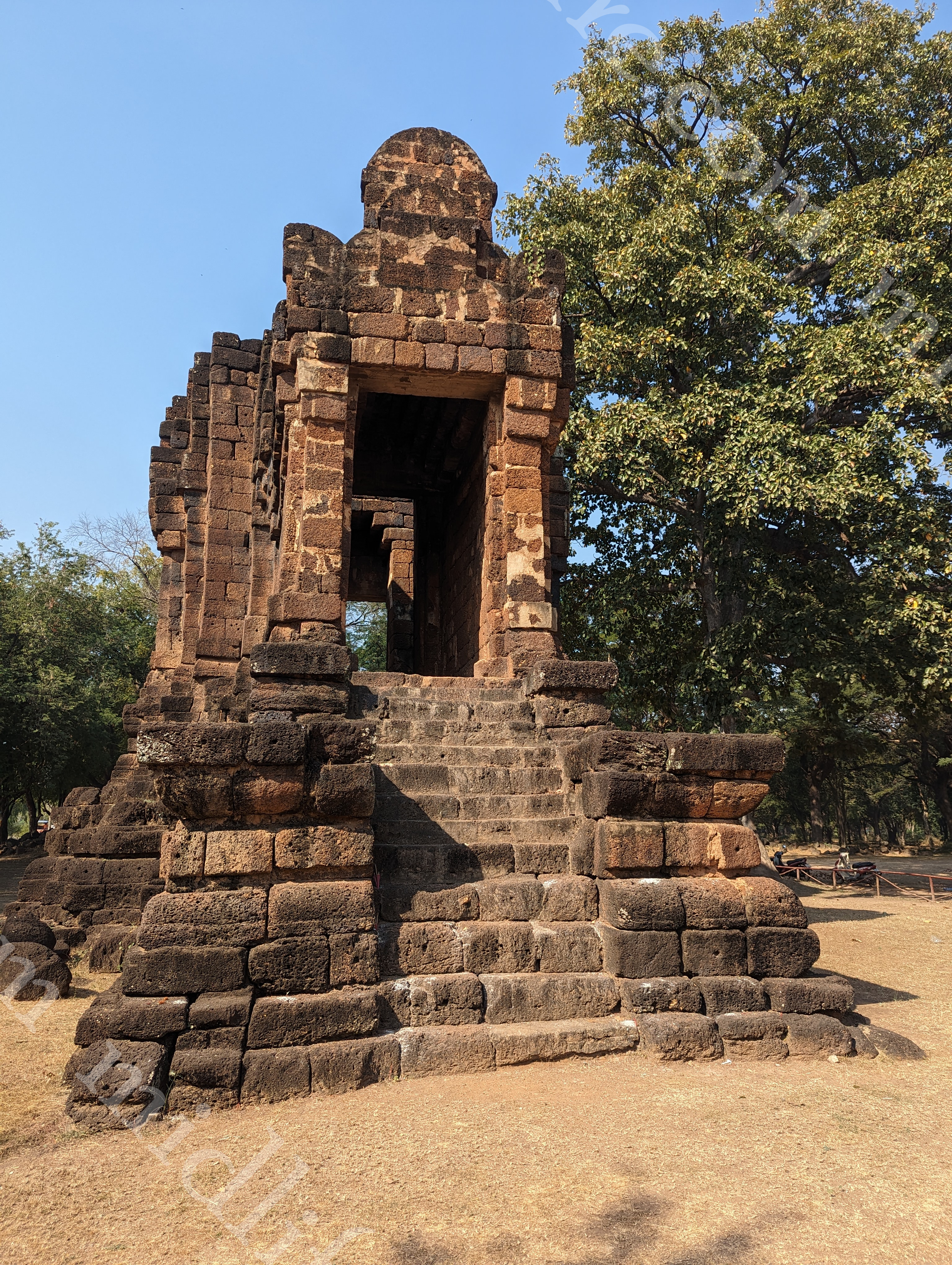




Wat Si Sawai
With this place containing the remains of Khmer rule and the onset of Thai rule, the architecture reflects this pretty well. You can clearly see the Khmer influences when you enter Wat Si Sawai with its three corncob shaped towers (prangs) and being surrounded by a wall.



Wat Mahathat
This temple was the most important royal temple in the Sukothai Kingdom. It is located right in the middle of the central zone. It is the largest of any in Sukhothai Historical Park and includes an incredibly large number of stupas, prangs (Khmer originated conical towers), and Buddha figures.








Wat Sa Si
This temple is on a small island and features a very impressive white sitting Buddha backdropped by a large chedi. And was infested by some annoying French tourists who took selfies for what seemed like forever.
Wat Sarosak
Wat Sorasak is a bell-shaped stupa on a brick base. The base of the temple is surrounded by 24 elephant heads (with torso and front legs). The remains of an assembly hall are just east of the stupa. Wat Sorasak was built about 1417 A.D.
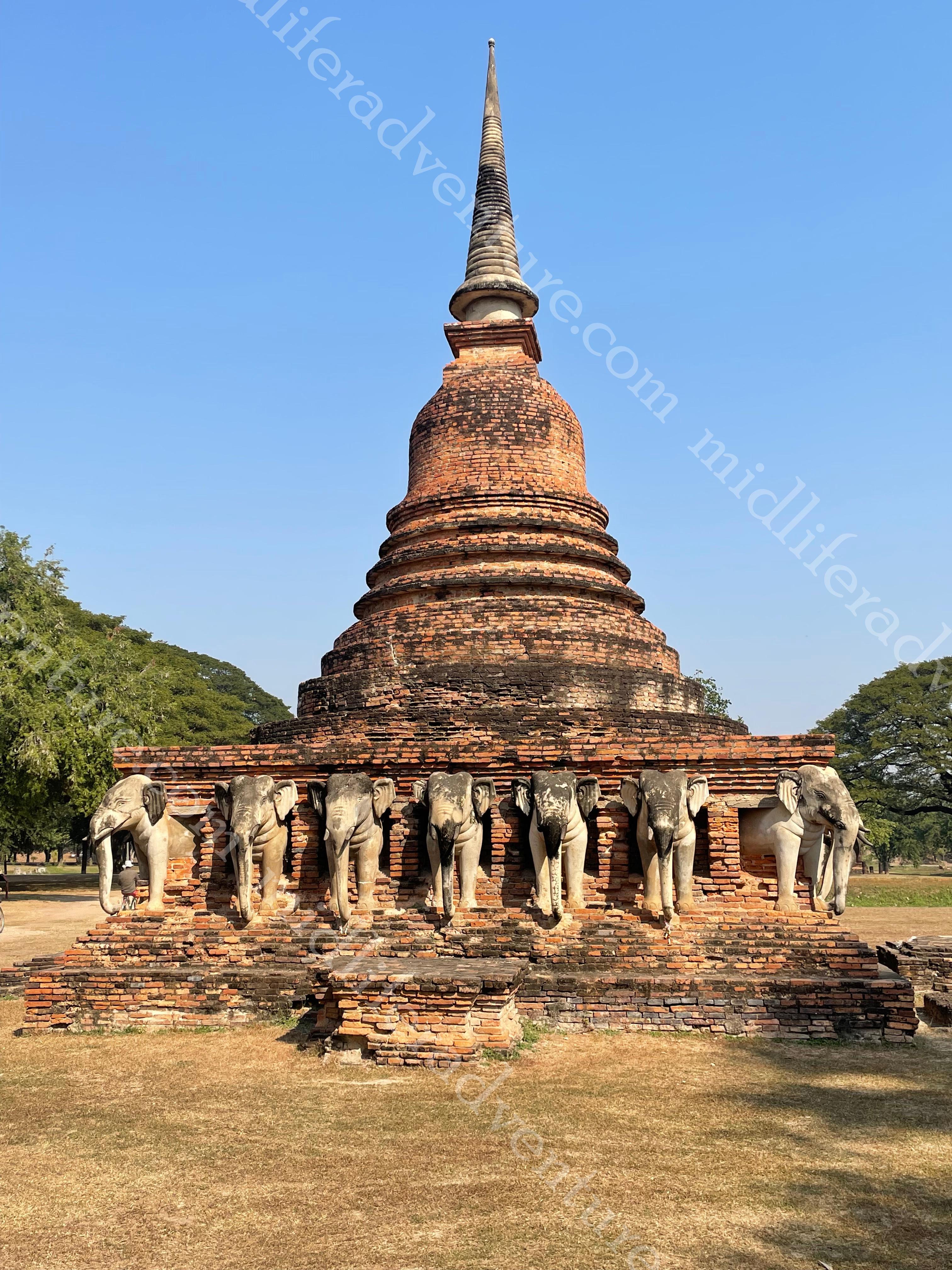


The outer zone of temples
We had a day off from sight seeing and then got back into it to do the outer ring of temples. Due to the distances in between them walking was not a reasonable option so we invested $1.50 each to hire bicycles for the day so that we could get around to them all. As you may expect, $1.50 does not rent you a top of the line bike in terms of either, speed, gearing nor comfort.
To circumnavigate the outer ring it is about a 15-20 km loop. It is fairly safe to say that, while there are 190 different ruins, many of them are little more than piles of bricks and are not really that impressive. Having cycled this distance on a very dodgy bicycle, it is also safe to say that my arse hates me and I hate non-motorised bikes.
Despite the spiel about the different zones having fees, we only found ticket booths at the north and central zones. The rest of the time you can get about freely. We came across a school group being taught by some crazy dude dressed in a safari-style outfit which was fine but we did notice the shirt that one of the teenage girls was wearing. Not sure if the meaning (or inference) of this was known – but I’m not sure that you would not get away with this shirt in the Australian schools that I went to.

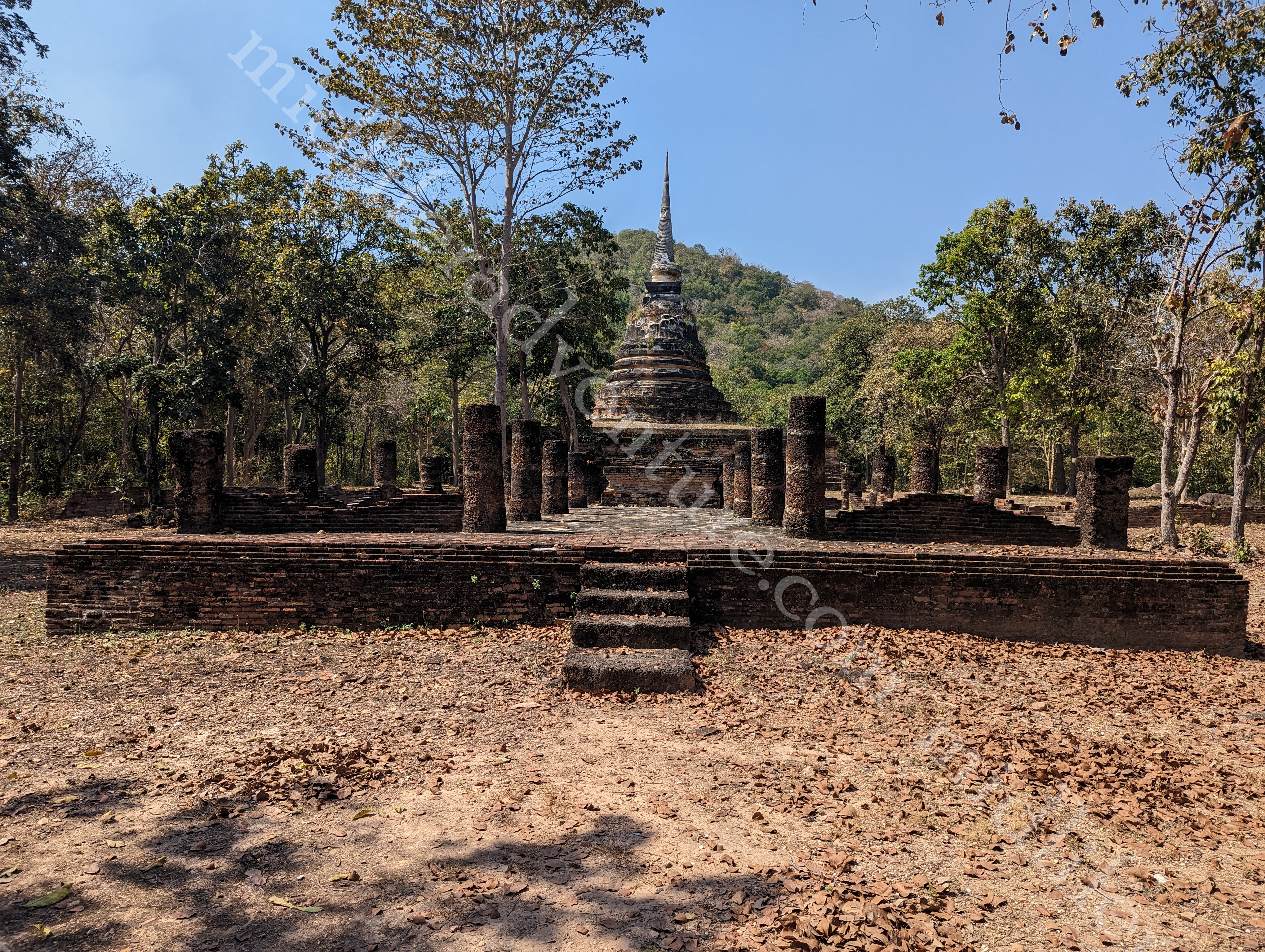






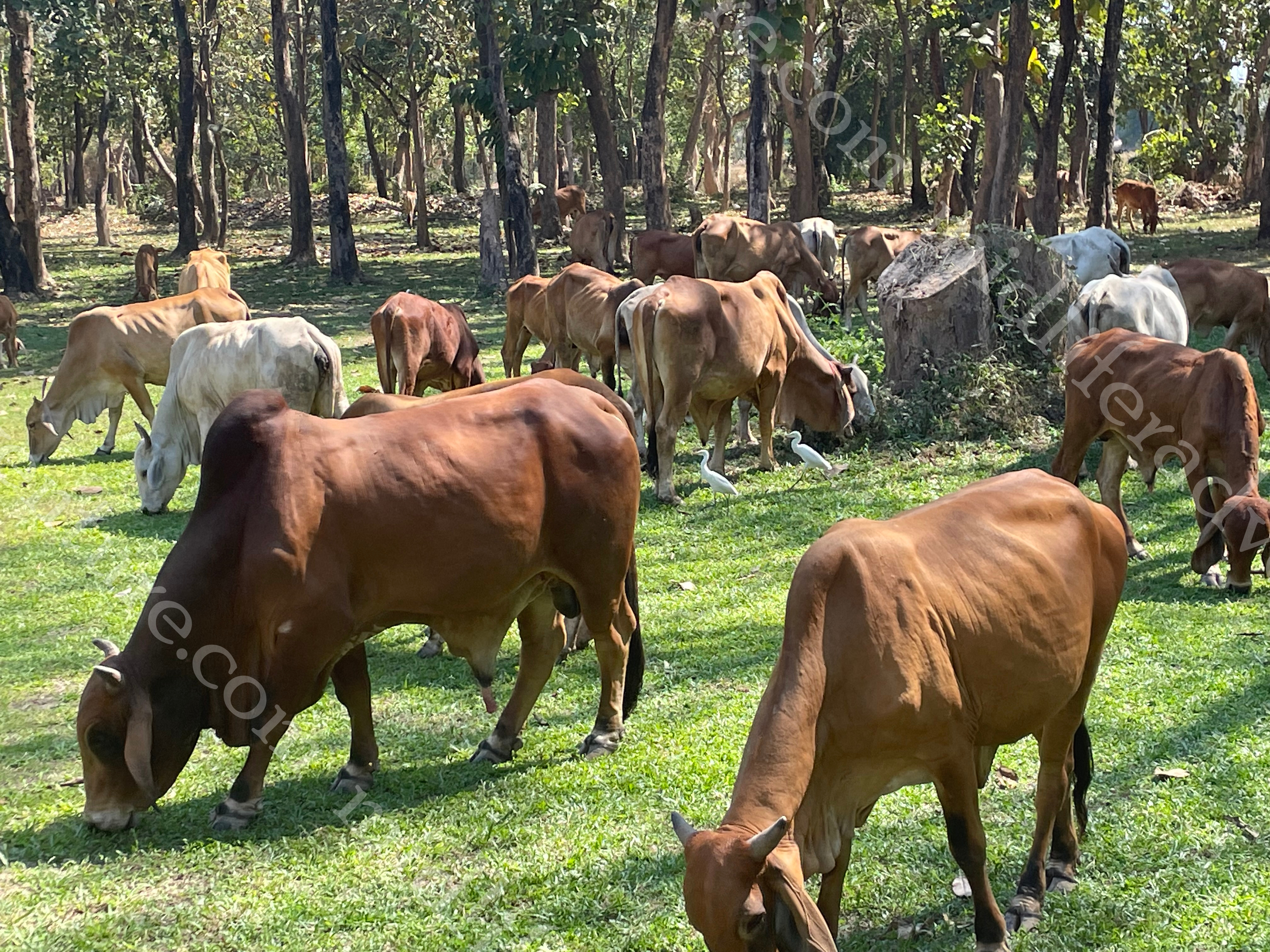


Is this the death of the tuk tuk?
Heading to the historical park the guest house owners told us to grab a tuk tuk and that it should be 150 baht one way…which it was. To return we hailed a tuk tuk and could not get a price cheaper than 200 baht despite trying to negotiate and haggle. So we rejected this, jumped on the Grab app and found that we could order an air-conditioned car that arrived within a few minutes and took us to our hotel for 130 baht.
The tuk tuk drivers (in every country) have a long history of ripping off tourists and charging ridiculously more than the locals. In India, the tourist price was about 250% the local price with some shady characters trying to charge much more, but with online apps, this world may well be changing. While we are happy to support the locals we are not happy being bilked in the process.
Apps such as Grab will tell you how much it will cost for you to get to your destination in the comfort of an air-conditioned vehicle. Surely any lesser options than these (such as tuk tuk) must be cheaper. They certainly should not be 50% more expensive, which was our experience trying to get home from the historical park.
Important note – If you are heading this way (Asia generally) the Grab transport App should be linked to alternative banking solutions (such as Wise or Revolut) so as to avoid huge bank fees and exorbitant exchange rate charges. In fact, these two are a much better way to avoid a multitude of bank fees charged by the usual banking suspects.
Ayutthaya
From Sukhothai, we had to get a car back to Phitsanulok (transport hub and all) and hang around to catch the train down to Ayutthaya. This was another of those pronunciation nightmares, but with none of the odd derivations, just a mouthful. We went phonetic on the pronunciation (Ay you thay a) to find out how very wrong we were when trying to tell the train person where we wanted to get off. They pronounce it Ay yutie ya.



The train journey was fairly simple, cheap and uneventful. We did around 300km for $20 a head and it took us about 3 and a half hours. Not particularly fast, but comfortable enough with them trying to feed us (several times) on the journey.
Anyway, having got here, Ayutthaya is about 80 kilometres north of Bangkok and was the second capital of the Kingdom of Siam after Sukhothai. It is located on an island surrounded by three rivers that connect the old city to the sea. It operated as the capital from 1350 until it was razed by the Burmese in 1767. The ruins of the old city now form the, UNESCO listed , Ayutthaya Historical Park’, an archaeological site that contains palaces, Buddhist temples, monasteries and statues.

The UNESCO site claims, once an important center of global diplomacy and commerce, Ayutthaya is now an archaeological ruin, characterized by the remains of tall prang (reliquary towers) and Buddhist monasteries of monumental proportions, which give an idea of the city’s past size and the splendor of its architecture.
Being only 80 km north of Bangkok Ayutthaya is a regular location for day trippers. So if you are staying here (and I suggest that you do) go to see the temples early, add to this the fact that it is hot here and you don’t want to be trekking in the 36 degree heat of the day. By about 10am the first of the busses from Bangkok start arriving and flock towards temple one on the list.
Wat Mahathat

Wat Mahathat is one of Ayutthaya’s oldest temples, possibly built by King Boromaraja I (1370-88) and is said to have housed one of the buddha holy relics. Many important royal ceremonies of the Ayutthaya era were hosted here. When the Ayutthaya Kingdom failed in 1767, it was severely damaged by fire and abandoned.






The temple is most famous for the Buddha head situated in a Bodhi tree root. But the site now holds the remains of numerous towers and Buddhist monasteries giving modern day visitors an idea as to the size of the original city.
From the first Wat, Jill and I wandered through the rest of the place virtually alone for the next hour or so as the tourist busses only tend to hit the big three or four and then head back to Bangkok. So we saw Wat Nok, Wat Lankhadum, Wat Langkhakhao and Wat Phong without really seeing anyone else.











Wat Phra Ram
This one saw the return of some of the crowds. Its main feature is a well-proportioned prang situated on a stepped terrace adorned with chedis. Some of the prang’s stucco decorations, including Buddha images in the walking and standing poses, still remain.



Wat Phra Si Sanphet
You are in the middle of the crowds now, Wat Phra Si Sanphet is the most historically important temple in old Ayutthaya. Its three large chedis and numerous smaller ones make this wat – also known as the King’s Temple – one of the most impressive sights in the ruined city. Two of the large chedis, the eastern and central ones, were built in 1492 by King Ramathibodi II to house the ashes of his father and elder brother. His own ashes are interred in the third chedi, built in 1530 by his son and royal successor, King Boromaraja IV.





Elephant Palace and Royal Kraal
This was my favourite bit of day one and is the highlight of this palace. The front of the elephant yard is a small elephant shelter where visitors can get a picture of the elephants and even feed them. There is an opportunity for elephant rides too.



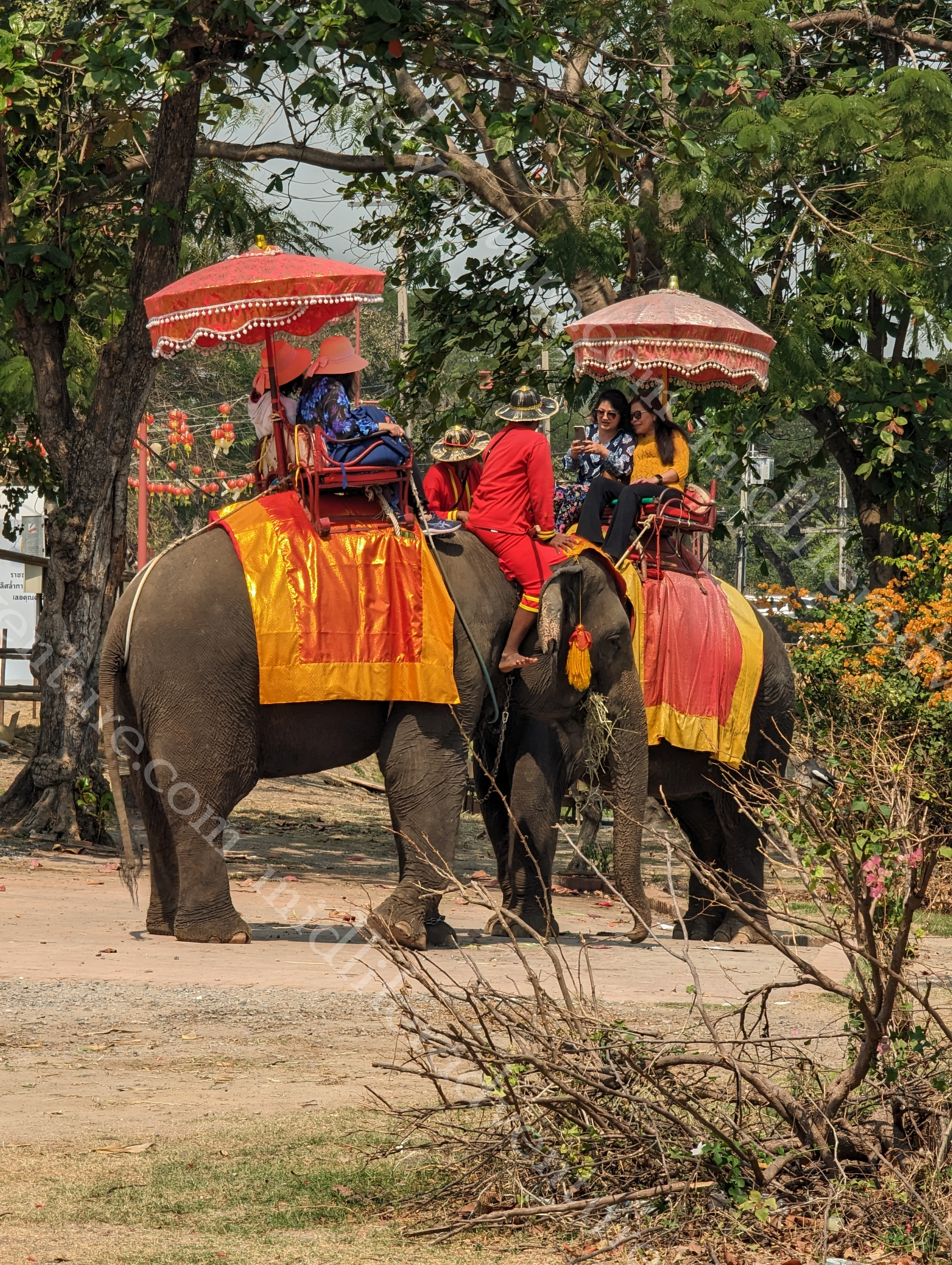

Jill’s favourite part of the day was watching a poor mahout (elephant herder) laying back on the elephant’s head while trying to capture the perfect Instagram shot for the two women riding (last photo above). I was caught fighting with a tuk tuk driver explaining why I did not a tour from him and missed the whole show, that apparently went on for ages.
Plastic is going to kill Asia
This is the first time we have seen anything this bad since India. Rubbish bins were in short supply throughout the entire town of Ayuttaya and the love of the plastic bag has created the biggest rubbish dump around. This place was a tip.
I am certain that if the appropriate receptacles were available that the Thai people would use them – but they were not. While the use of the plastic bag and takeaway meals has been ubiquitous throughout Thailand, this is the first place where litter and rubbish has been obvious.
The outer ring
Much like Cambodia, there is an inner ring and an outer ring of temples to visit. Day one we walked and ripped out about 18,000 steps, leaving us tired and weary in the 35 degree heat. So day two we hired a tuk tuk to do the outer ring.

Wat Yai Chaya Mongkol
This is the site of the reclining buddha and a stupa with a set of stairs that saw me tapping out. Jill, on the other hand, seems to have taken every set of stairs as a challenge that must be climbed. Even on a smoggy morning where there will be no view, she will climb it.







Wat Phananchoeng
The large wihan holds a 19 meter high, gilded, seated Buddha. It is a highly revered Buddha statue and is regarded as a guardian for mariners.










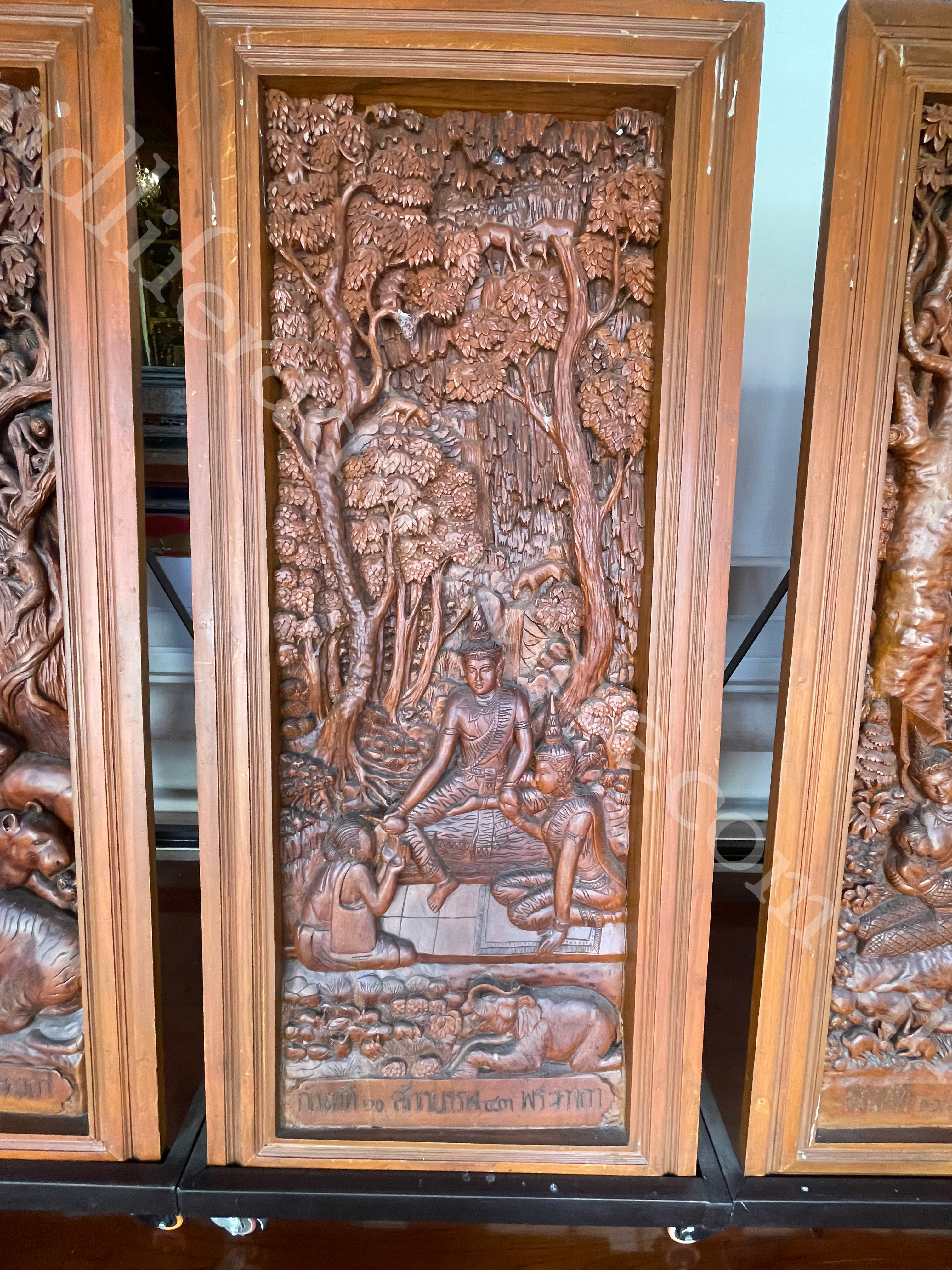



Wat Chai Wattanaram
Built in 1630 by King Prasat Thong to honour his mother, Wat Chai Wattanaram was conceived as a replica of the Angkor temple. Interestingly the street around the temple is full of traditional Thai outfits that are available to rent and be dressed to the nines for photos and touring.






Wat Phukhaothong and King Naresuan the Great monument
King Naresuan the Great is a national hero and one of Thailand’s most
revered monarchs as he liberated the country from the Burmese. His incredibly impressive tribute statue can be found a couple of kilometres to the north of the city along with another temple with an impossibly long staircase (which of course – Jill climbed).









Wat Thammikarat
This is the last of the temples that we visited. It is located in front of the ancient palace and after a fair day trekking about in 37 degree heat we decided that we were done.






Water Monitors

The water monitor (Varanus salvator) is a large lizard native to South and Southeast Asia. While walking along the waterfront we saw some small water monitors (about 50cm long) swimming through the water and resting on the branches of fallen trees. As we walked on further we saw some more examples that obviously had a ready access to a diet of human rubbish and had grown significantly bigger.
The ones we saw were huge. The Thai national parks website tells me that adults rarely exceed 1.5 – 2 m in length, but the largest specimen on record, from Sri Lanka, measured 3.21 m. The ones we saw today were every bit of 2m.


The injustice of the Roti

Roti is a typical SE Asian dessert that I have mentioned many times already. Served typically with banana, condensed milk or chocolate. It can be found at street vendors almost everywhere.
In Cambodia, they were very cheap but we hadn’t got the taste yet so we only had the one. In Chiang Mai we had another one, in Chiang Rai, well Jill has discovered a taste for them. We could get them from almost any vendor for 20 baht ($1). When we moved to Sukhothai the price had halved to 10 baht (50c) and they became a staple on our menu on the walk home. We have landed in Ayutthaya and the price is a ridiculous 50 baht ($2.50) and Jill is pouting furiously at the 500% markup and is boycotting their purchase.

It seems much has changed since I was last as some of these places. And yet, not enough has changed. Oh well…